The ultimate guide to becoming superyacht crew

There are a plethora of reasons why more and more people are packing their bags and opting for a career at sea aboard a luxury yacht. After all, few jobs exist where you can be offered expense-free living, (often) tax-free salaries and desirable voyages around the world to exotic locations.
Factor in the meeting of interesting people, the opportunity to enjoy unique experiences and the memories you'll create, the prospect of working as superyacht crew is incredibly appealing.

A career at sea is a fantastic way to sample a unique lifestyle for a few years whilst saving plenty of cash for later life. But, of course, there aren’t quite enough superyachts out there yet for everyone to land that coveted crew job. So, how do you give yourself the best possible chance of standing out and securing a role on board?
Here we cover the essential steps and need-to-know information to give you the best possible chance of becoming superyacht crew.

Make sure you can work on a superyacht
It might sound slightly condescending, but, as with many other unique industries, not everyone is quite cut out for this line of work. As luxurious as it can be made to sound, there's a lot of hard, stressful, physically and mentally demanding work to be done as a crew member.
You’re often dealing with very wealthy, powerful owners and UHNWIs (ultra-high-net-worth-individuals) and their families, as well as serving their likely rich-and-powerful guests. Needless to say, they can be very expectant.
The hours – particularly when guests are on board – are typically very long. When you do get the chance to rest, you’re sleeping in shared cabins, away from home for extended periods of time, and personal privacy becomes a rarity. You have to be able to handle this whilst maintaining the high spirits and optimum levels of service.
Then, there are the formalities: Have you got the correct visas? Correct training? Any tattoos? Are you a smoker? These are all important factors that could impact your chances of securing a position on board.
In could you work on a superyacht? we list eight questions to ask yourself before deciding whether a superyacht career is for you.

Understand the different roles aboard and how you would fit in to them
The term ‘yacht crew’ refers to at least a dozen-or-so different roles on a superyacht. Some are more hospitality-focused, such as a steward or stewardess, while others are more skill-based, such as an engineer.
Whilst you may be planning to enter the industry as a deckhand or junior stew and work your way up, it’s important to understand the roles, duties, and responsibilities of all crew on board. Check out our guide on yacht crew positions and contracts for a complete rundown of what each role entails, as well as the average salary and main responsibilities.
Get trained up!
The marine industry is awash with crew training providers and a range of courses and certifications – some of which are mandatory, such as the ENG1 and STCW , while others will simply help you obtain a more desirable skillset. Find out which training you will need to undertake in our article, The right crew training for the right crew member .
Remember, having additional skills, languages and a busy personal life listed on your CV is a huge help in making you stand out from the sea of other applicants. So, consider which, if any, additional courses may help you in obtaining and succeeding in your chosen role before you actively start looking for work.
Get yourself out there!
Getting the mandatory crew training is a great start in your yacht job search, but is your crew CV as good as it could be? Are you looking for work at the right time and in the right place? Are you sufficiently prepared for your interviews? How does a superyacht crew job interview even play out? It’s important to consider all these things before hitting the dock.

It's logical to start with your crew CV. As with many things in the superyacht industry, there are some key differences between a CV in the corporate world and the marine/superyacht world, so we’ve written our own guide tailored towards writing a CV for work in the superyacht industry .
To find a position on board, it's recommended to move to the yachting hubs and hiring ports of the world, and networking in the local yachtie hangouts to get yourself noticed. The South of France and the Balearics are popular options.
Different yachting hotspots have their peak periods, as we discuss in depth in our How to choose the right hiring port article. Only experienced senior crew are likely to ever be flown out for interviews; so unless that's your forte, you’ll need to make sure you're on the ground in your chosen port, and as accessible as possible to potential interviewers.
Your yachting career will likely begin with daywork: Single, one-off jobs for a bit of cash and a nugget of valuable experience. If you do a good job, you might even get called back for further work. That's how it can all begin!
It’s time to nail the interview!
Job interviews aren’t the most enjoyable of experiences, regardless of the industry you’re entering. It's daunting and obviously rejection is never pleasant.
But, when you’ve gone to the effort of relocating yourself to search for crew work, and you’ve paid good money for multiple training courses and medical certifications, falling at the last hurdle hits even harder.
As a first-time yachtie, expecting a job offer for every interview you attend is unrealistic, but with some simple guidelines and advice, you can ensure you’re as well prepared as you possibly can be.
Much like crew CVs, job interviews can be a little different in the superyacht industry too. We go more in-depth on this topic in our How to succeed in a yacht job interview article, where you’ll learn what’s typically expected of yacht crew candidates at interview, amongst essential tips for the big day.
There are easier jobs to find in the world than a superyacht crew role – we all know that – but the amazing stories and experiences we hear from past and present crew are a testament to how those who put the hard work in really do reap the rewards. It can take time, but crew recruitment is worth it.
You can take a look at the crew agents listings here on Yachtingpages.com for agencies that can greatly assist in your search for a career in yachting. Alternatively, you can browse crew training companies for courses you'll need to get into the industry.
We wish all prospective crew the very best of luck in their job search!
Read other crew-related articles and guides in our specialist Crew Training and Crew Corner content libraries.
Tried & Tested

A jacket completes any crew member's uniform so it's an important garment to get right. In this Tried & Tested, Sea Design pits eight popular jackets against one another to determine which one is best for superyacht crew in 2023.
iAQUA creates high-performance, technologically advanced underwater scooters. In this Tried & Tested, a team of experienced testers have rated and reviewed the AquaDart Pro and AquaDart Nano series to reveal the stand-out iAQUA sea scooter.
In our 2022 Tried & Tested, yacht toy specialist EAMS and a group of captains and crew review a selection of the very best luxury water toys on the market. Find out which toy was crowned the winner...
SeaYou will be returning to Marina Genova for its 4th edition on Thursday 18th April and Friday 19th April, 2024....

MB92 Group and Pinmar, part of GYG Ltd, has partnered to launch a sustainability initiative in collaboration with the Ba...

Popular Articles
Finished reading now find your perfect supplier..
Search our industry-leading directory for over 20,000 superyacht suppliers, providers and marinas.
Impartial training and careers advice
Call us: +441983 280 641
+441983 280 641
- How to become a Yachtie
So you’re thinking about becoming a Yachtie?
You may have a friend or relative who already works in the industry, or you have watched TV programmes like Below Deck , you know working on a yacht is the right for you, but where do you start?
With the potential to earn great money, travel, and work with loads of like-minded people, it’s not surprising this job ticks a lot of boxes for many people.
Becoming a Yachtie and getting paid to work on luxury yachts may seem like a job and industry that only the elite can have access to, or it just seems too confusing to start.
However, with an understanding of the requirements, certification, and having some expectations of what job role you should be looking for, starting work as a Yachtie will not seem so daunting.
What is a Yachtie?
Before we go any further, let’s make sure we are all singing off the same hymn sheet.
A Yachtie is a broad term used to describe anyone who works on a yacht. More specifically, it has become the term for people working as yacht crew on superyachts.
A superyacht is a very large boat that is extremely luxurious and often owned by multi millionaires and billionaires.
These Yachties who work on superyachts hold a number of different positions. Most Yachties will start their superyacht career working as a Deckhand or Stewardess. With more experience and responsibilities, your role will change as you progress up the career ladder.
It’s worth noting there are other types of yachting and Yachties. The other kind of ‘Yachtie’ could describe those who hold their Yachtmaster qualification and have jobs like skipper charter boats.
Job roles for new Yachties
Yachties new to the industry (also known as ‘Green’ Yachties) will traditionally apply for entry levels roles, which are Yacht Deckhands or Yacht Stewardesses.
These are both very different jobs, so you need to be sure which one you want to do and start training for that career path.
Yacht Stewardess (Stew)
A Stewardess, or Steward , looks after the interior of the yacht. This means anything that happens inside the boat, you will be responsible for it.
Think of any job in the hospitality industry and then combine it into one role on a yacht, that is what you will be doing.
From making beds, doing the laundry, cleaning, serving food, and hosting dinner, you will do it all to a 5-star standard. Anything less than perfect, and your guests won’t be satisfied.
It’s the small things that make the difference between high standards and exceptional standards. You must have a great eye for detail and be able to make sure no stone is left unturned. Everything on board the ship must be 100% perfect at all times.
You will be reporting to Chief Stew, who will be your manager and give you your task list. After a good few seasons as a green Stewardess, you will have enough experience and confidence to apply for Chief Stewardess roles.
Yacht Deckhand
In contrast to the Stewardess role, Deckhands look after the exterior of the boat.
Predominantly a male role, Deckhands will do everything from general maintenance to cleaning the teak deck, looking after the toys (Jet Skis, etc.), and even driving the tenders.
Deckhands should know how a yacht operates, the basic terminology used onboard, how to tie knots, and loads and loads of enthusiasm.
Deckhands may also dip in and out of helping the Stewardesses, and it isn’t uncommon for Deckhands to give a hand during busy evening meal preparation and service.
5 steps to Becoming a Yachtie
With an understanding of the job roles available, you can now decide which one best suits you. With the right attitude, qualifications, and knowing where to look for work, becoming a Yachtie is achievable for anyone who wants it.
- Have the right attitude
- Pass an ENG1 medical
- Complete STCW Basic Safety Training
- Gain experience
- Go to a superyacht marina
1. Have the right attitude
Along with gaining the correct qualifications to prove your competence, to become a Yachtie, you must have certain characteristics to thrive in this industry.
Yachties have to be well presented, articulate, know how to take orders, and be able to work hard, all with a smile and enthusiasm. You have to be able to work incredibly long hours, sometimes under stressful conditions, without losing your patience.
Having a job on a superyacht may sound glamorous, but if it’s your 10th day working in a row and you’ve got your head stuck down a toilet trying to clean it, you may want to think again. To become a Yachtie, you have to be happy with spending a lot of time away from home without seeing your friends and family. This may all seem obvious, but this situation does not suit everyone, and without careful consideration of the negatives, you will leave this industry quicker than when you arrived.
2. Pass ENG1 Medical
The first actionable step you need to take to become a Yachtie is gaining an ENG1 medical certificate. The ENG1 medical is an examination by an approved MCA (Maritime and Coastguard Agency) Doctor to make sure you are fit and able to work at sea.
Every single person working at sea must have an ENG1 medical certificate , without this, you are not able to start working on superyachts. The examination will take around 45 minutes, during which the doctor will go through a checklist to make sure you have no underlying health conditions that may impact the safety of you or anyone else on board the ship.
The most common reason new yachties fail the ENG1 is colour blindness. Surprisingly many people can go through their whole life without knowing they are colour blind. However, on board a ship, this can have huge implications. If you cannot identify signals and lights correctly, it will be impossible for you to help navigate the ship in an emergency. Unfortunately, this means you cannot start work as a Yachtie.
3. Complete STCW Basic Safety Training
Another requirement for working at sea is completing STCW Basic Safety Training . Similar to the ENG1 you can only get a job on a yacht if you have the STCW certificate.
STCW stands for ‘Standards of Training, Certification and Watchkeeping’. It is to make sure that all Seafarers have an understanding of what to do in an emergency and are aware of the procedures required.
STCW Courses are action-packed and quite a bit of fun. From fire fighting to sea survival, you will get stuck in learning, and learn loads of new skills.
4. Gain experience
If you are lucky enough to have a job offer on a superyacht, then having your ENG1 and STCW certificates will be enough.
Don’t worry if you haven’t already got a job offer, it’s quite normal to go through all these steps and not have a job lined up yet. If this is the case, gaining more experience and qualifications is a good idea to give you a competitive advantage over anyone else applying for the same job role.
This is achieved through signing up to a Deckhand or Stewardess Course. On these courses, you will get your standard STCW certificate and a list of extra qualifications demonstrating your competence, ability, and commitment to the industry.
Deckhands will learn how to drive a small yacht, engine maintenance, general yacht repair, and how to clean teak properly. Stewardesses will understand wine and how to serve it, the art of flower arranging, and how to drive a powerboat.
5. Go to a superyacht marina
After you have completed your superyacht training, now is the time to head out to France and look for work. Along with signing up to yacht crew recruitment agencies, going to one of the main superyacht marinas and handing out your CV to Captains is a great way to find work. This is known as dockwalking.
If you complete your Superyacht Course with us, you will have the option of signing up to our recruitment day in Antibes, France. We head out to France as a group, talk you through the process and offer you our industry contacts.
This is a great way to start your journey, and all our students find work in no time.
How much do Yachties make?
So you’ve heard you can make a good amount of money working on superyachts? Along with the travel, the great salary is why many people decide to become a Yachtie.
Like a job within any industry, salary varies. A Superyacht will agree on a crew salary budget with the owner of the yacht.
If you are just starting out, you can expect a salary of around €2,200 – €3,200 per month. However, the industry standard is €2,500 per month. Once you gain more experience and qualifications, your salary will increase.
When you look at the salary at face value, it looks great but not incredible, however when you are at sea, you have zero outgoings. Working on a yacht means you don’t have to pay rent, bills, or buy food which will save you heaps of money compared with working at home.
If you want to see the salaries of all yacht crew, check out our Salary Guide.
Do Yachties pay taxes?
Another reason why the salary is so appealing is that in most cases Yachties don’t have to pay tax.
This is a government scheme called the Seafarers Earning Deduction , and providing you are eligible, Yachties can keep 100% of their earnings.
To be able to apply for Seafarers Earning Deduction, you must be working on a ship outside of UK waters for a period of 365 days. This doesn’t mean you have to spend a whole year at once away from home, rather you can only apply once all the days you work on a yacht adds up to 365.
Being able to understand this tax scheme will be hugely beneficial before you start working on a Superyacht.
Download our free Guide
Want to know more about working on a Superyacht, please download our free guide .
Related articles
- Seafarers Tax
5 ways to ensure your SED claim is rock solid
The Seafarers’ Earnings Deduction, often referred to as the SED, is a tax legislation that enables seafarers to claim back their UK income tax. It a...
Do I need to pay off my Student loan if I work on a Superyacht?
Good question! First, let me say that the information below is aimed at people who have studied in the UK and took out a Student Loan to cover course ...
Have I got the right experience to work in yachting?
If you’re thinking about working on board a Superyacht, we share the skills and experience you need and how to get into the yachting industry in thi...

The Ultimate Guide: How to Crew on a Sailboat for Beginners
Alex Morgan
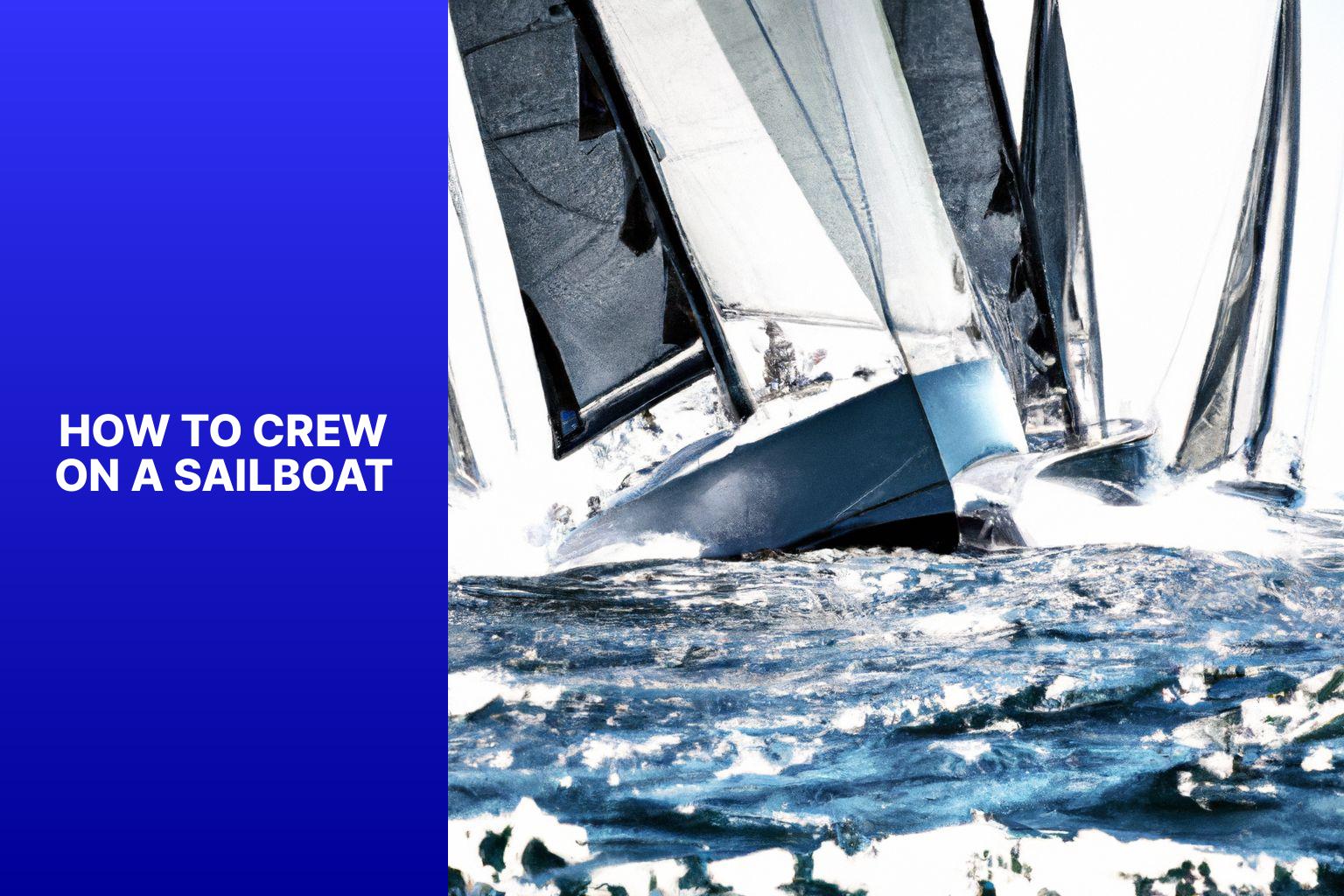
Crewing on a sailboat is an exhilarating experience that allows you to harness the power of the wind and navigate the open waters. Whether you are a seasoned sailor or a beginner looking to learn the ropes, understanding the fundamentals of crewing on a sailboat is essential for a successful voyage.
In this article, we will explore the different aspects of crewing on a sailboat, including the types of sailboats, roles, and responsibilities of crew members, essential skills and qualities, safety procedures, knot tying, sail trim, rigging, and navigation. By the end of this article, you will have a comprehensive understanding of what it takes to be a valuable crew member on a sailboat adventure.
Before we delve into the details, let’s start with an introduction to crewing on a sailboat. We will then discuss the different types of sailboats, such as monohulls and catamarans, and the distinct features and characteristics of each. Understanding the type of sailboat you will be crewing on is crucial for mastering the specific skills required on board.
Next, we will outline the various roles and responsibilities of crew members. From the skipper who leads the crew to the helm , trimmer , bow crew , mast crew , and navigator , each position plays a vital role in ensuring the smooth operation and maneuvering of the sailboat.
To be an effective crew member, certain skills and qualities are essential. We will discuss the importance of sailing knowledge and experience, teamwork and communication, physical fitness, and problem-solving skills. These attributes will contribute to a harmonious and efficient crew dynamic.
Safety is of utmost importance while at sea. We will cover the basic safety equipment that should be on board, man overboard drills for emergency situations, first aid and emergency response, as well as weather awareness and preparedness.
Knot tying and line handling skills are essential for sailboat crew members. We will introduce you to some essential knots like the bowline knot , clove hitch , and cleat hitch , as well as teach you how to properly coil and tie lines.
Understanding sail trim and rigging is another crucial aspect of crewing on a sailboat. We will explore how to control sail shape, adjust halyards and sheets, and tune the rigging to optimize performance and efficiency.
We will touch upon navigation and chart reading, including basic nautical charts, compass usage, and dead reckoning. These skills will enable you to navigate your course with confidence and precision.
By the end of this article, you will be equipped with the knowledge and skills necessary to enjoy the adventure of crewing on a sailboat. So, let’s set sail and embark on this exciting journey together.
Key takeaway:
- Crewing on a sailboat requires teamwork and communication: Successful crew members must possess strong teamwork and communication skills to effectively work together on a sailboat.
- Safety is paramount: Being aware of basic safety procedures, emergency response, and weather conditions is essential for maintaining a safe environment while crewing on a sailboat.
- Knowledge of sail trim and rigging is crucial: Understanding how to control sail shape, adjust halyards and sheets, and tune the rigging is key to optimizing performance and efficiency on a sailboat.
Types of Sailboats
When it comes to hitting the waves, understanding the different types of sailboats is key . In this section, we’ll uncover two distinct categories: monohulls and catamarans . Get ready to dive into the thrilling world of sailboat crewing as we explore the characteristics and unique features of each type. So whether you’re a seasoned sailor or a curious novice, let’s embark on a voyage of discovery and unravel the wonders of these magnificent vessels.
1. Monohulls
Monohulls, also known as sailboats with a single hull, are highly stable vessels that are capable of handling rough seas. This characteristic is what makes them immensely popular for both offshore cruising and racing activities. Monohulls come in a range of sizes, spanning from small day-sailers to colossal ocean-going yachts. The ingenious design of monohulls enables easy maneuverability and enhanced ability to sail close to the wind. For added stability, monohulls are equipped with a keel beneath the hull.
These sailboats are furnished with a variety of sails suited for diverse sailing conditions and speeds. These include the main sail, genoa, jib, and spinnaker. In order to effectively handle the sails, navigation, and steering of the boat, a crew is required. In terms of interior space, monohulls boast a comfortable and spacious layout, ideal for lengthier voyages. Their versatility is another commendable aspect as they can be utilized for day trips as well as extended cruising.
2. Catamarans
Catamarans, with their wide beam and twin hulls, are well-known for their stability and spaciousness. These characteristics make them a comfortable choice for individuals prone to seasickness .
Not only that, catamarans are generally faster than monohulls due to the reduced drag provided by their twin hulls.
When it comes to space, catamarans offer larger cabins, lounges, and deck areas, ensuring ample living and storage space.
Their shallow draft enables them to access shallow anchorages and explore areas that are out of reach for monohulls.
Choosing between a catamaran and a monohull depends on personal preferences and sailing goals.
If stability, spaciousness, and comfort are top priorities, a catamaran may be the ideal choice.
On the other hand, if speed, agility, and the ability to point higher into the wind are prioritized, a monohull may be more suitable.
Roles and Responsibilities of Crew Members
Sailing the seas is a beautiful adventure, but it takes a well-coordinated crew to navigate the unpredictable waters. In this section, we’ll dive into the essential roles and responsibilities of each crew member on a sailboat. From the knowledgeable skipper to the skilled helm , the meticulous trimmer to the agile bow and mast crew, and the sharp-eyed navigator , each position plays a vital role in ensuring a smooth and successful voyage. So, grab your life jacket and let’s set sail into the world of crewing on a sailboat.
The role of a skipper on a sailboat is crucial for the overall operation and safety of the crew and vessel. The skipper, also known as the boat captain, is responsible for making navigational decisions, ensuring the boat is operated safely and efficiently, and overseeing the activities of the crew.
One of the key responsibilities of a skipper is making navigational decisions based on their strong knowledge of seamanship and navigation. They must have excellent leadership and decision-making skills to set the course and determine sail configurations. Additionally, effective communication and teamwork abilities are essential in managing and coordinating the crew.
The skipper also plays a vital role in ensuring safety protocols are followed and has the problem-solving skills and ability to handle emergencies. They monitor weather conditions and adjust plans accordingly, relying on their strong understanding of meteorology and weather patterns.
For aspiring skippers, it is recommended to continuously learn and improve their sailing skills and knowledge. Participating in races or joining sailing clubs can provide valuable experience and opportunities to refine their leadership abilities. It is also important to stay up-to-date with advancements in technology and equipment to enhance their proficiency in managing the boat and crew.
Remember, becoming an effective skipper takes time and experience. Embrace a lifelong learning mindset and commit to ongoing growth and development to excel in this important role on a sailboat.
The helm is responsible for steering and controlling the direction of a sailboat. To effectively helm a sailboat, follow these steps:
1. Take your position at the helm and familiarize yourself with the steering mechanism.
2. Maintain a steady grip on the tiller or wheel and balance your stance.
3. Monitor the wind direction and adjust the sails accordingly for optimal performance.
4. Coordinate maneuvers and navigate obstacles by communicating with the skipper and crew.
5. React promptly to changes in wind speed and direction to maintain control of the boat.
6. Keep a lookout for other vessels, obstacles, or potential hazards in the water.
7. Steer the boat smoothly and make minor course adjustments as needed.
8. Be aware of the boat’s speed, acceleration, and responsiveness to your steering inputs.
To enhance your helm skills, practice regularly in different weather conditions and on various sailboats. Seek feedback from experienced sailors and learn from their insights. Remember, mastering the helm requires sailing knowledge, adaptability, and sharp decision-making skills. Enjoy the adventure of crewing on a sailboat and embrace the learning opportunities it offers.
The trimmer is an essential role on a sailboat. Their primary responsibility is to adjust the sails for optimal performance and efficiency. They achieve this by changing the sail position based on the wind direction and speed. Collaborating closely with the helm, the trimmer ensures the sails are adjusted according to the boat’s course and desired speed. Clear communication between the trimmer and helm is crucial for making quick adjustments.
In addition, the trimmer continuously monitors the sail performance and makes necessary adjustments to maintain optimal speed and efficiency. They also assist in tuning the rigging by adjusting the tension of the mast, shrouds, and stays. This helps improve the sail shape and overall performance of the boat.
During sail changes, the trimmer plays a vital role in hoisting, lowering, and adjusting new sails efficiently. Their expertise in sail trim allows them to minimize any loss of speed or performance during these transitions.
The trimmer needs to have a deep understanding of wind shifts and the ability to anticipate changes in wind direction. This skill allows them to make proactive adjustments to maintain optimal sail trim.
The trimmer is crucial in maximizing sailboat performance. Their expertise in sail trim and ability to quickly adapt to changing conditions are essential for success on the water.
4. Bow Crew
The Bow Crew , also known as the Bow Crew , plays a crucial role in the smooth operation and navigation of a sailboat. This team has a set of key responsibilities and tasks, including the following:
1. Setting and handling the anchor: As part of their duties, the Bow Crew prepares and deploys the anchor when the sailboat reaches its intended anchorage. It is essential that they know how to properly set and secure the anchor to keep the boat in place.
2. Managing the bow line: Another important task for the Bow Crew is handling the bow line, which is used for mooring the boat or securing it to a dock. To accomplish this safely and securely, they need to possess the necessary skills in knot tying and line handling.
3. Assisting with docking maneuvers: During the docking process, the Bow Crew provides assistance with line handling and ensuring that the boat remains a safe distance from the dock to avoid any damage. Effective communication with other crew members is crucial for a smooth and secure docking process.
4. Keeping a lookout: A primary responsibility of the Bow Crew is to keep a vigilant watch for any potential obstacles or hazards in the water, including other boats, buoys, or rocks. Their role is to promptly alert the rest of the crew to ensure safe navigation.
5. Handling sails and line adjustments: As part of their tasks, the Bow Crew assists with handling and adjusting sails, particularly during tacking or gybing. It is important for them to be familiar with the proper techniques for hoisting, lowering, and reefing sails.
Being a member of the Bow Crew requires a keen attention to detail, excellent communication skills, and the ability to work effectively as part of a team. Safety and efficiency are of paramount importance in the performance of these duties.
5. Mast Crew
The role of the mast crew is vital in ensuring the smooth operation and maneuverability of a sailboat. The mast crew plays a significant role in handling and maintaining the sails to optimize the performance of the boat. They are responsible for various tasks, including hoisting and lowering sails as directed by the skipper or helm, ensuring proper alignment and integrity.
The crew members also trim and adjust the sails to achieve the desired sail shape and maximize speed and efficiency using control lines such as halyards, sheets, and reefing lines. They proficiently assist in reefing , reducing the sail’s size during strong winds. The mast crew is responsible for inspecting and maintaining sail-related equipment, promptly fixing any issues that arise. Effective communication between the crew members, helm, and trimmers is crucial to ensuring coordination between sail adjustments and boat maneuvers.
To be a successful mast crew member, it is essential to have a good understanding of sail trim , excellent teamwork, communication skills, physical fitness, and problem-solving abilities. Safety should always be a priority, and crew members should be knowledgeable about safety procedures, weather conditions, and emergency response protocols.
To excel in this role, it is recommended to practice tying essential knots such as the bowline , clove hitch , and cleat hitch . Understanding navigation charts, using a compass, and mastering dead reckoning will greatly enhance your skills. Embrace the challenges and rewards of being a vital part of the mast crew and enjoy the adventure of crewing on a sailboat.
6. Navigator
The role of a navigator on a sailboat is crucial for the safe and accurate navigation of the vessel. The navigator is responsible for incorporating their expertise in chart reading, navigation instruments, and situational awareness to guide the boat to its destination. Collaborating with other crew members, the navigator ensures that informed decisions are made based on the current conditions and the planned route. By efficiently using nautical charts and considering factors such as wind direction, current, and obstacles, the navigator plots the best course. They also read and interpret charts, understanding symbols, depth contours, and other information to locate the boat’s position and plan the route. Navigational instruments like compasses, GPS devices, and depth sounders are utilized by the navigator to accurately determine the boat’s heading, speed, and position. The navigator practices dead reckoning , estimating the vessel’s position based on the previous known position, course, speed, and time elapsed. It is important for the navigator to maintain situational awareness , remaining alert to detect any changes in conditions, hazards, or approaching vessels. Ultimately, a skilled navigator plays a vital role in ensuring the safety of the crew and the boat, making the journey a success.
Essential Skills and Qualities for Crew Members
Ready to set sail? In this section, we’ll delve into the essential skills and qualities that make a great crew member on a sailboat. From sailing knowledge and experience to teamwork and communication skills , physical fitness , and problem-solving abilities , we’ll uncover what it takes to be an invaluable part of a sailing team. So grab your life jacket, because we’re about to embark on an exciting journey through the seas of crewing on a sailboat!
1. Sailing Knowledge and Experience
When it comes to sailing, having a strong foundation of sailing knowledge and experience is crucial for crew members. Here are some important points to consider:
1. Take sailing courses: Sailing courses provide valuable knowledge and hands-on experience. Courses like the American Sailing Association’s Basic Keelboat or Royal Yachting Association’s Competent Crew can teach fundamental skills and build confidence.
2. Join crewing opportunities: Enhance your sailing experience by actively seeking crewing opportunities. Connect with experienced sailors through local sailing clubs or associations. Offer your services as a volunteer crew for regattas or offshore races to gain practical experience.
3. Practice on different sailboats: Expand your sailing knowledge by familiarizing yourself with various types of sailboats, such as monohulls and catamarans. Each type has unique characteristics and requires different handling techniques.
4. Learn sail trim: Understanding sail trim is essential for optimizing a sailboat’s performance. Make sure to familiarize yourself with concepts like wind angle, sail shape, and adjusting halyards and sheets for proper sail tension.
5. Navigate using charts: Develop the necessary skills to navigate using basic nautical charts. Learn how to interpret symbols, depth soundings, and landmarks to plot a course and ensure safe passage.
6. Gain experience in different sailing conditions: Improve your proficiency by actively practicing sailing in various weather conditions and sea states. This will allow you to handle different situations with ease.
By continuously learning and gaining hands-on experience, crew members can significantly improve their sailing knowledge and skills, ultimately resulting in safer and more enjoyable sailing experiences.
2. Teamwork and Communication
Teamwork and communication are crucial for a successful sailing experience. It is important to consider several key aspects:
Clear communication: Use concise language to effectively convey information and instructions among crew members. This includes using proper nautical terms and hand signals while on the water.
Active listening: Actively listen to each other and the skipper to ensure a clear understanding of tasks, directions, and safety procedures.
Collaboration: Working together as a team is vital for smooth sailing. Support each other, share responsibilities, and coordinate tasks to maintain the boat’s performance.
Trust and respect: Trust and respect each other’s abilities and decisions to create a cohesive crew. Value each person’s contribution and treat everyone with respect.
Problem-solving: When faced with challenges or unexpected situations, maintain a calm and proactive approach. Collaborate to find solutions and make quick decisions when necessary.
Adaptability: Sailing conditions can change rapidly. Be adaptable to adjust strategies and actions accordingly. Being flexible and open to change is crucial for successful teamwork.
Efficient coordination: Coordinate movements and actions to maximize efficiency and prevent accidents or mishaps. Synchronize maneuvers, handle equipment together, and maintain good balance and stability.
By prioritizing teamwork and communication, a sailboat crew can operate smoothly and enjoy a safe and rewarding sailing experience.
3. Physical Fitness
Physical fitness is important for crew members on a sailboat. Here are the key factors to consider:
- Endurance : Crew members need good cardiovascular fitness to endure long hours of physical activity on the boat, like hiking out or grinding winches.
- Strength : Strength is crucial for tasks like hoisting sails and maneuvering equipment. Upper body and core strength are particularly important.
- Flexibility : Flexibility helps crew members perform maneuvers effortlessly, like moving around the boat, adjusting sails, and maintaining balance.
- Balance : Good balance is essential to prevent falls and injuries on a moving sailboat. Crew members should practice exercises that improve stability and coordination.
- Agility : Sailboats require quick and agile movements, especially during maneuvers or when responding to changing wind conditions. Agility training helps crew members react swiftly and efficiently.
Maintaining physical fitness is vital for the safety of crew members and the overall performance of the sailboat. Regular exercise, including cardiovascular workouts, strength training, stretching, and balance exercises, can improve physical fitness and enhance sailing abilities.
In the Volvo Ocean Race, physical fitness played a crucial role in the success of the teams. The sailors endured extreme weather and long hours of physical exertion. Teams prioritized fitness training tailored to sailing’s demanding nature. This focus not only improved performance on the boat but also reduced the risk of injuries and contributed to overall well-being. The dedication to physical fitness exemplified the importance of being in top form as a crew member on a sailboat.
4. Problem-Solving Skills
Problem-solving skills are essential for crewing on a sailboat. Here are key points to consider:
- Quick thinking: Crew members must think quickly and come up with solutions to unexpected challenges that may arise during a sail. This could include equipment malfunctions or changing weather conditions.
- Resourcefulness: Being resourceful is crucial when problem-solving on a sailboat. Crew members need to make the most of limited resources, using their creativity to find solutions.
- Clear communication: Effective communication is vital for problem-solving as it allows crew members to share information and ideas. It also helps avoid misunderstandings and ensures everyone is on the same page when addressing a problem.
- Collaboration: Problem-solving on a sailboat often requires teamwork. Crew members must work together, listen to each other’s ideas, and contribute their expertise to find the best solution.
- Adaptability: The ability to adapt and adjust plans is crucial when facing challenges on a sailboat. Crew members should be flexible and willing to change course if necessary, prioritizing the safety and well-being of the crew.
Fact: Cultivating problem-solving skills enhances a crew member’s proficiency and boosts the overall well-being and success of the sailing experience.
Safety and Emergency Procedures
When it comes to crewing on a sailboat, one aspect that cannot be overlooked is safety and emergency procedures . It’s crucial to have a solid understanding of how to handle any unforeseen situations that may arise. In this section, we will explore the key elements that contribute to a safe sailing experience . From basic safety equipment to man overboard drills , first aid and emergency response, and weather awareness and preparedness , we will cover everything you need to know to ensure a seamless and secure journey on the open waters .
1. Basic Safety Equipment
Basic safety equipment is crucial for sailboat crew members to guarantee the well-being and security of all on board. Here is a comprehensive list of necessary safety equipment:
- Life jackets : Every crew member requires a properly fitting life jacket approved by the Coast Guard. These jackets provide buoyancy during emergencies.
- Throwable flotation devices: An easily accessible flotation device, such as a lifebuoy or rescue ring, should be readily available for rescuing individuals who fall overboard.
- Fire extinguisher : An easily accessible fire extinguisher that is properly maintained is vital in case of fires on the boat.
- Flares : Flares are used for signaling for help during emergencies. Crew members should be knowledgeable about their usage and have them easily accessible.
- First aid kit : It is essential to have a well-stocked first aid kit on board to treat minor injuries and provide initial care until professional medical assistance is available, if necessary.
- Bilge pump : A bilge pump aids in removing water from the boat’s bilge, ensuring the vessel remains afloat and free from excess water.
Regular inspection and maintenance of all safety equipment is critical to ensuring proper functionality. It is also important for crew members to be familiar with the location and operation of these items in order to swiftly respond during emergencies.
2. Man Overboard Drills
Man Overboard Drills are critical for sailboat safety. These drills are essential to ensure that the crew is well-prepared and able to respond promptly and efficiently in the event that someone falls overboard. Here are the steps to follow when conducting man overboard drills:
- Alert the crew by shouting “Man overboard!”
- Indicate the person’s location by pointing at them in the water.
- Mark the spot by activating the man overboard button on the boat’s navigation system.
- Assign a crew member to maintain visual contact with the person in the water.
- Position the boat in a close-hauled position to have the best sailing angle towards the individual.
- Throw a flotation device towards the person in the water.
- Assign a crew member to initiate the recovery process while wearing a safety harness and lifeline.
- Approach the person in the water while maintaining a safe distance.
- Use a boat hook or your hand to grab hold of the person’s life jacket or clothing.
- Assist the person in getting back onto the boat using proper lifting and transfer techniques.
Remember, regular practice of man overboard drills improves the proficiency of the crew and ensures the safety of everyone on board. It’s also crucial to designate a specific crew member responsible for calling for outside assistance if necessary. Stay vigilant and be prepared for any emergencies while out at sea.
3. First Aid and Emergency Response
When it comes to sailing, being prepared for emergencies and knowing how to respond is crucial. Here are some important aspects to consider for first aid and emergency response :
1. Basic Safety Equipment: All crew members should know the location and proper use of safety equipment such as life jackets, fire extinguishers, and flares.
2. Man Overboard Drills: Knowing how to quickly perform a man overboard drill is crucial in case someone falls overboard. This involves maneuvering the boat, throwing out a lifebuoy or device to mark the spot, and executing a rescue plan.
3. First Aid and Emergency Response: Crew members should have a basic understanding of first aid techniques, including CPR and basic wound care. It is important to have a well-stocked first aid kit on board with essentials like bandages, antiseptic solutions, and pain relievers.
4. Weather Awareness and Preparedness: Monitoring changing weather conditions is crucial for safety. Crew members should understand the signs of impending storms and know how to respond appropriately, such as reefing the sails or seeking shelter.
True History Fact: During a sailing race in the Caribbean in 2014, a crew member suffered a severe leg laceration due to a shifting piece of equipment. The crew’s knowledge of first aid and emergency response allowed them to quickly control the bleeding and provide proper wound care until the injured crew member could receive medical attention at the nearest port.
4. Weather Awareness and Preparedness
Weather awareness and preparedness are vital for the safety of sailing. In order to ensure a safe journey, it is important to follow these steps:
- Stay updated: It is essential to regularly check weather forecasts to stay informed about any changes or alerts.
- Learn the signs: Familiarize yourself with visual cues that indicate different weather patterns, such as cloud formations or shifts in wind direction.
- Understand wind patterns: Take the time to study wind maps and charts so that you can identify the prevailing winds in your sailing area. This knowledge will assist you in planning your course and anticipating any potential changes in wind speed and direction.
- Monitor barometric pressure: Stay vigilant and keep track of any changes in barometric pressure, as they can serve as an indication of approaching storms or changes in weather conditions.
- Be aware of storm systems: It is crucial to stay informed about the development and movement of storms, including tropical storms and hurricanes, as they may affect your chosen sailing route.
- Prepare for adverse weather: Make sure to have the necessary gear on board, such as rain jackets, warm clothing, and safety harnesses, in order to protect yourself from inclement weather.
- Develop an emergency plan: Create a procedure for handling extreme weather situations and ensure that all crew members are familiar with it.
- Know your limits: It is important to understand the capabilities of your boat and the skill level of your crew. Avoid sailing in conditions that are beyond your comfort or experience level.
- Seek shelter if necessary: In the event of severe weather, it is advisable to find a safe haven where you can anchor or take refuge until conditions improve.
Essential Knots and Line Handling
Mastering the art of knot tying and line handling is an essential skill for any crew member on a sailboat. In this section, we’ll dive into the world of essential knots and various techniques for handling lines. From the versatile bowline knot to the secure clove hitch and convenient cleat hitch , we’ll explore the key knots that every sailor should know. We’ll cover tips and tricks for properly tying and coiling lines, ensuring smooth and efficient sailing adventures. Get ready to become a knot-tying expert !
1. Bowline Knot
The bowline knot is a crucial knot for sailors, as it creates a strong loop at the end of a rope. To tie a bowline knot , follow these steps:
1. Start by making a small loop in the rope, ensuring that the end of the rope is on top.
2. Pass the end of the rope through the loop from underneath.
3. Next, bring the end of the rope around the standing part of the rope.
4. Pass the end of the rope back through the loop.
5. Tighten the knot by simultaneously pulling on the standing part of the rope and the end of the rope.
6. Once tightened, the bowline knot will securely hold, creating a loop that won’t slip.
During a sailing trip, a sudden storm caused a crew member to fall overboard. In response, the skipper immediately called for a man overboard drill, and the crew swiftly sprang into action. One skilled sailor promptly tied a bowline knot on a rescue line, ensuring a secure loop to pull the crew member back on board. The bowline knot proved its reliability as it held strong, resulting in a safe and successful rescue. It is crucial for sailors to know and practice essential knots like the bowline, especially in emergency situations at sea.
2. Clove Hitch
The Clove Hitch is a versatile knot used for various purposes on a sailboat. It is a reliable knot that can hold tension in two directions, making it useful for attaching fenders, securing sails, or creating anchor points. Tying a Clove Hitch is a quick and easy way to secure a line to a cleat or pole on a sailboat. Here are the steps to tie a Clove Hitch :
- Make a loop with the rope.
- Pass the end of the rope over the standing part.
- Bring the end of the rope under the standing part and over the loop.
- Pass the end of the rope under the standing part again.
- Pull the end of the rope tight to secure the Clove Hitch .
Practice tying the Clove Hitch to improve your knot-tying skills and ensure the safety and stability of your sailboat.
Fact: The Clove Hitch is named after the clove tree, known for its strength and durability in securing sailing knots.
3. Cleat Hitch
The cleat hitch is a practical knot for fastening a line to a cleat on a sailboat. Here are the steps to tie a cleat hitch:
1. First, take the line and pass it around the base of the cleat .
2. Next, cross the line over itself and bring it under the opposite horn of the cleat .
3. Then, loop the line over the top of the opposite horn of the cleat .
4. After that, wrap the line under the first loop, creating a figure-eight shape.
5. Now, pass the line under the second horn of the cleat .
6. Pull the line tightly to securely hold the cleat hitch in place.
Remember to always double-check that the cleat hitch is properly secured before relying on it to withstand tension. The cleat hitch is a reliable knot that can handle significant loads.
To improve your proficiency in tying the cleat hitch , make sure to practice it regularly. Get familiar with different sizes and types of cleats to be prepared for various situations while working on a sailboat.
4. Tying and Coiling Lines
When tying and coiling lines on a sailboat, it is important to follow these steps for a secure and efficient operation:
1. Begin by untwisting and freeing the line of any knots and tangles.
2. Next, wrap the line around a fixed object such as a cleat or winch at least two times. This will provide a secure anchor point .
3. To create a “ half hitch ,” form a loop with the line and pass the working end through it.
4. Pull the working end tight to securely fasten the half hitch .
5. Repeat the process of creating half hitches until the line is fully and securely fastened .
6. When it comes to coiling the line , hold the end in one hand and use your other hand to create loops.
7. Make sure to alternate the direction of each loop to create neatly coiled line .
8. To secure the end of the line , tuck the working end under one of the loops.
9. It is important to ensure that the coiled line is tidy and compact to prevent tangles and make it easier to handle.
Following these steps will ensure that your lines are properly tied and coiled , allowing for efficient and safe operation of the sailboat.
Understanding Sail Trim and Rigging
Get ready to set sail with an in-depth exploration of sail trim and rigging . We’ll uncover the secrets of controlling sail shape , fine-tuning halyards and sheets , and perfecting the rigging . Whether you’re a seasoned sailor or just getting started, this section will equip you with the knowledge you need to navigate the waters with confidence . So hop on board and let’s dive into the fascinating world of sail trim and rigging !
1. Controlling Sail Shape
Controlling sail shape is crucial for maximizing performance and efficiency. Here are the steps to effectively control sail shape:
Adjust halyard tension: Increase tension to flatten the sail for faster and more efficient sailing. This reduces drag and improves the boat’s movement through the water.
Tweak sheet angle: Sheet angle affects sail shape. By trimming the sheets appropriately, you can achieve the desired shape. Easing the sheets creates a fuller shape for lighter winds, while trimming in flattens the sail for stronger winds.
Use cunningham or downhaul: These lines control tension along the sail’s luff. Adjusting them flattens the sail and controls its shape, especially in the lower section.
Consider vang or boom kicker: These help control the sail’s twist. Adjusting them controls the shape of the upper part of the sail and maintains efficient airflow.
Use mast bend: Fine-tune mast bend to adjust sail shape. This can be achieved by adjusting backstay tension or using a mast bend control system.
Monitor and adjust sail controls: Use telltales attached to the sail to gauge its efficiency. Smooth-flowing telltales indicate optimal sail shape. Make necessary adjustments if the telltales are not flowing smoothly.
Observe and react to changing wind conditions: Continuously adjust the sail shape based on prevailing wind conditions. Lighter winds require fuller sails, while stronger winds need flatter sails to reduce heeling and maintain control.
By using these techniques, sailors can maintain optimal sail shape, leading to increased speed, improved stability, and overall better performance on the water.
2. Adjusting Halyards and Sheets
Adjusting halyards and sheets is important for sailboat crew members. It optimizes sail performance by making changes to the positioning and tension of the halyards and sheets . Here are some key points to consider:
1. Understanding sail shape: Adjusting halyards and sheets controls sail shape, impacting speed and maneuverability.
2. Tensioning halyards : Proper tensioning shapes the sails and captures wind effectively.
3. Trimming sheets : By adjusting sheets , crew members can fine-tune sail angle and tightness.
4. Balancing tension: Maintaining a proper balance prevents stress on the sails and rigging, promoting smoother sailing and reducing the risk of damage.
5. Continual monitoring: Adjustments may be needed throughout the sail, depending on wind shifts and other factors. Crew members should be attentive for optimal sail performance.
Mastering the skill of adjusting halyards and sheets enhances the overall efficiency and performance of the sailboat, improving the sailing experience for everyone on board.
3. Tuning the Rigging
To tune the rigging on a sailboat, follow these steps:
1. Inspect the rigging for wear or damage—look for frayed cables or loose connections.
2. Measure the tension in the rigging using a tension gauge. The optimal tension is typically around 15-20% of the breaking strength.
3. Adjust the rigging by turning the turnbuckles clockwise if it is too loose. Use a wrench to do this.
4. If the rigging is too tight, loosen it by turning the turnbuckles counterclockwise. Be careful not to over-loosen to prevent excessive mast movement.
5. After making adjustments, re-measure the tension using the tension gauge. Continue adjusting until the desired tension is achieved.
6. Check the mast rake, which is the forward or backward inclination of the mast. You can change the mast rake by adjusting the mast step or forestay tension.
7. Lastly, check the alignment of the mast. It should be straight from top to bottom. If there is any misalignment, adjust the rigging as needed.
Following these steps will ensure that the rigging on your sailboat is properly tuned, which is crucial for optimal performance and safety on the water.
Navigation and Chart Reading
Embarking on a sailboat adventure requires mastering the art of navigation and chart reading. In this section, we’ll dive into the essential skills needed to navigate the vast waters. From understanding basic nautical charts to utilizing a compass and practicing dead reckoning, we’ll equip you with the knowledge to confidently sail the seas. So, grab your compass and get ready to set sail on a thrilling journey of exploration and discovery !
1. Basic Nautical Charts
When crewing on a sailboat, it is crucial to understand basic nautical charts. These charts provide detailed information about navigational aids, such as buoys, beacons, and lighthouses, which help sailors determine their position and navigate safely. They also indicate water depths using soundings and contour lines to prevent grounding. Nautical charts include landmarks and features such as shorelines, islands, rocks, and channels, which help sailors identify their location and plan routes. Familiarizing yourself with the symbols and abbreviations used in charts can help you understand the information more effectively. Paying attention to the chart’s scale and orientation is important for accurate interpretation of distances and directions. It is also crucial to regularly update charts for changes in water depth, landmarks, and navigational aids, using the most recent chart available for accuracy. By using basic nautical charts, crew members can navigate safely and effectively on a sailboat.
2. Using a Compass
When it comes to sailing, using a compass is essential for navigation. Here are the steps involved:
1. Hold the compass level and steady, away from magnetic interference.
2. Align the compass housing with the direction of travel arrow.
3. Read the degree markings on the compass housing to determine the bearing.
4. Rotate the compass housing until the red magnetic needle aligns with the orienting arrow.
5. Read the determined bearing from the degree markings on the compass housing.
6. Keep the compass level and steady while following your desired bearing.
7. Periodically check the compass to ensure you are staying on course.
Using a compass accurately helps navigate, even when landmarks or other aids are not visible. It is an essential tool for sailors to reach their destination safely and efficiently.
In the early years of sailing, compasses were not always reliable due to factors like iron on the ship or variations in the Earth’s magnetic field. Advancements in compass technology and understanding of magnetic forces have made modern compasses more accurate and dependable. Today, sailors can rely on compasses to guide them, providing them with direction and improving their sailing experience.
3. Dead Reckoning
When sailing, dead reckoning is a technique to estimate your current position based on previous known positions and the boat’s course and speed. Here’s how you can do dead reckoning:
1. Record the boat’s starting position, course, and speed.
2. Monitor the boat’s course and speed over time, making adjustments for any changes.
3. Use the elapsed time and the boat’s speed to calculate the distance traveled.
4. Based on the boat’s course and distance traveled, plot a line on the chart from the starting position in the direction of the course.
5. If the boat changes course or speed, make note of these changes and adjust the line accordingly.
6. If there are known landmarks or navigational aids along the course, use them to confirm the estimated position.
Pro-tip: Improve the accuracy of dead reckoning by regularly comparing the estimated position with actual positions obtained through other navigation techniques such as celestial navigation or GPS.
Some Facts About How To Crew On A Sailboat:
- ✅ There are sailing opportunities available for amateur and professional crew members worldwide. (Source: Crewseekers.net)
- ✅ It is free for everyone to browse through all current sailing opportunities, but membership is required to contact yacht owners and join their crew. (Source: Crewseekers.net)
- ✅ Walking the docks in sailing towns and using the internet are effective ways to find crew opportunities and work on sailboats. (Source: Transitions Abroad)
- ✅ Some captains are willing to take inexperienced sailors and teach them along the way, making crew positions accessible to those without prior experience. (Source: Transitions Abroad)
- ✅ Crewing on sailboats allows individuals to experience the rawness and basic nature of life at sea, as well as the beauty of the ocean and the night sky. (Source: Transitions Abroad)
Frequently Asked Questions
1. how can i find crewing opportunities on sailboats.
You can find crewing opportunities on sailboats by walking the docks in sailing towns and talking to people, using the internet to search for crew opportunities, or participating in cruising rallies organized by experienced sailors.
2. Are there sailing opportunities available for all experience levels?
Yes, there are sailing opportunities available for both amateur and professional crew members worldwide, regardless of their experience level.
3. How can I join a sailboat crew?
To join a sailboat crew, you need to register and become a member of a yacht crew introduction agency. This will allow you to browse through current sailing opportunities and contact yacht owners to join their crew.
4. What are the essential roles on a sailboat?
The essential roles on a sailboat include the Captain, who is the decision maker; the cook, who ensures the crew’s sustenance; the person at the helm, who makes critical decisions; and the dog watchers, who take care of the dog and anchor during off hours.
5. Can inexperienced sailors join sailboat crews?
Yes, many sailboat captains are willing to take inexperienced sailors and teach them along the way. Trustworthiness and a hard-working attitude are important attributes when looking for a crew position.
6. What are the benefits of crewing on a sailboat for travel?
Crewing on a sailboat for travel offers a unique and affordable way to see the world. It saves money on airfare and provides a stronger connection to nature and the universe. It can also be a life-changing experience and an opportunity to learn new skills.
About the author
Leave a Reply Cancel reply
Your email address will not be published. Required fields are marked *
Save my name, email, and website in this browser for the next time I comment.
Latest posts

The history of sailing – from ancient times to modern adventures
History of Sailing Sailing is a time-honored tradition that has evolved over millennia, from its humble beginnings as a means of transportation to a beloved modern-day recreational activity. The history of sailing is a fascinating journey that spans cultures and centuries, rich in innovation and adventure. In this article, we’ll explore the remarkable evolution of…

Sailing Solo: Adventures and Challenges of Single-Handed Sailing
Solo Sailing Sailing has always been a pursuit of freedom, adventure, and self-discovery. While sailing with a crew is a fantastic experience, there’s a unique allure to sailing solo – just you, the wind, and the open sea. Single-handed sailing, as it’s often called, is a journey of self-reliance, resilience, and the ultimate test of…

Sustainable Sailing: Eco-Friendly Practices on the boat
Eco Friendly Sailing Sailing is an exhilarating and timeless way to explore the beauty of the open water, but it’s important to remember that our oceans and environment need our protection. Sustainable sailing, which involves eco-friendly practices and mindful decision-making, allows sailors to enjoy their adventures while minimizing their impact on the environment. In this…
Working On Yachts
There are currently over 15,000 yachts in the world large enough to require professional, qualified yacht crew and as a result this industry is growing rapidly each year.
A career in yachting can be rewarding, exciting and a wonderful opportunity to travel the world and explore new horizons!
Wherever there is water, you have the potential to go. Traditionally the yachting industry in the Mediterranean runs from April until September and from November to April in the States & Caribbean. Having said that, the possibilities are endless with many yachts circumnavigating the world.
Yachting is an eye opening, ultimately fun industry that demands hard work, perfection and attention to detail. We work with yacht crew every day and have a deep insight into what new crew should do to make the most of their career. Here are our top ten tips for starting out.
You cannot work on board a luxury yacht without getting your basic qualifications first. Bluewater offers a full range of crew training courses for those just starting in the industry:
- STCW 95 Basic Training (Europe) 5 Day Course
- Powerboat Level II 2 Day Course
- Interior Introduction 3 Day Course
- AEC 1 5 Day Course
We have a sample copy and lots of relevant advice on creating your first yachting CV within our 'Your CV' section.
Certain times of year are more favourable for new crew looking to join the industry. If you are going to Antibes or Palma, we advise end of March/April. Fort Lauderdale is different in that it is sunny most of the year, however there is a peak recruitment season around November each year.
In every yachting hub you will find english speaking bars and cafes filled with yacht crew. Make sure you go and explore to build your network within yachting. Although global, it is a small industry so make sure to present yourself professionally.
Finding your first position in yachting is the hardest. Make sure you are dock walking, looking for day work opportunities and handing out your CV. You may find that one day's work leads to a permanent role or other job interviews.
Read websites, follow yachting news, learn from other crew who were in your 'deck shoes' a few years ago. Good examples of yachting websites & magazines are:
- Bluewater bluewateryachting.com
- Dockwalk dockwalk.com
- The Crew Report thecrewreport.com
- The Triton thetriton.com
Apply for jobs, manage your course bookings and sign up for events.
You can buy pay as you go SIM cards either in newsagents or specialised telephone shops around the Mediterranean. This will help to save you money when job hunting!
Captains check Facebook and Twitter pages before interviews. Make sure any public images of you are professional and will not reduce your chances of employment. Once employed be sure to avoid any posts about your yachts, current location and inappropriate images.
A smart, professional appearance will win over shorts and a beach top.
The most important aspect when you are looking for work is to make sure your CV is up to date, well written and includes any relevant experience that you might have.
It is best to emphasize any hospitality experience or customer service skills you may have had, such as waitressing, hostessing, silver service, bartending, cooking, nanny/au-pairing, babysitting, flower arranging, cleaning and/or laundry experience.
Should you wish to join the engineering department, make sure you include all mechanical experience and qualifications, including all work done in refrigeration, air conditioning, work with engines, and any electrical work, electronics or AV/IT.
The most important aspect to include is any recreational sailing experience you may have had. If you are also qualified or experienced in woodwork or carpentry, have painting, polishing, varnishing know-how, then that is also great. In addition any diving, sailing, fishing, any water sports background are all fantastic skills that are easily transferable.
We deal with a great multitude of chef positions, ranging from crew chef to head chef. Most positions will require some form of culinary training, however some crew succeed in entering this department through the stew/cook route on a smaller yacht.
When filling in your online profile with us, make sure to only select positions that you are qualified to do onboard. Selecting more than 3-4 positions on your profile can confuse potential employers and effect our search results.
Your CV should be no more than two sides of A4, including your photograph (in colour, face on, without sunglasses).
Your CV should be in a word format to ensure it can be opened easily by all employers.
List all recent contact information, references and work history.
Including a personal statement, along with a clear objective can help distinguish you from other candidates and helps prospective employers grasp your long term goals.
Don't give employers an excuse to dismiss your CV, review and spell check it!
Salary Guidelines

Knowledge is power and the more you research, the more informed & on the ball you will be.
Make sure you have a printed copy of your CV with you and always arrive early and dressed in a smart way. Research the yacht, make yourself prepared & don't be afraid to ask questions.
The key to getting your first job is to network! Always carry a copy of your CV with you.
Remember the industry is a tight, professional network therefore it is crucial to communicate with others, walk the docks, distribute your CV and register with crew agencies. Bluewater is one of the longest-established crew agents - we have been finding people yacht jobs since 1991!
Keep the agencies up to date! Always make sure your profile has the correct location and contact numbers for you so we can get hold of you when we have the perfect role for you.
Your profile is essential to us finding you work, both now and in the future. We rely on the information you input to match you to the right jobs, so please make sure it is up to date and at least 85% complete. We receive thousands of vacancies each year, and search our database for the best candidates for each one... You will hear from us more often if you are checking in regularly! Once you find work you can set your profile to 'Not Available'.

Start a Superyachting Career
Start working on a superyacht by completing the following steps:.
- Have realistic expectations
- Select a superyacht job department
- Complete superyacht training courses
- Obtain an ENG1 medical certificate
- Select a location to join the industry
- Obtain visas & documentation
- Create a superyacht CV
- Find superyacht job vacancies
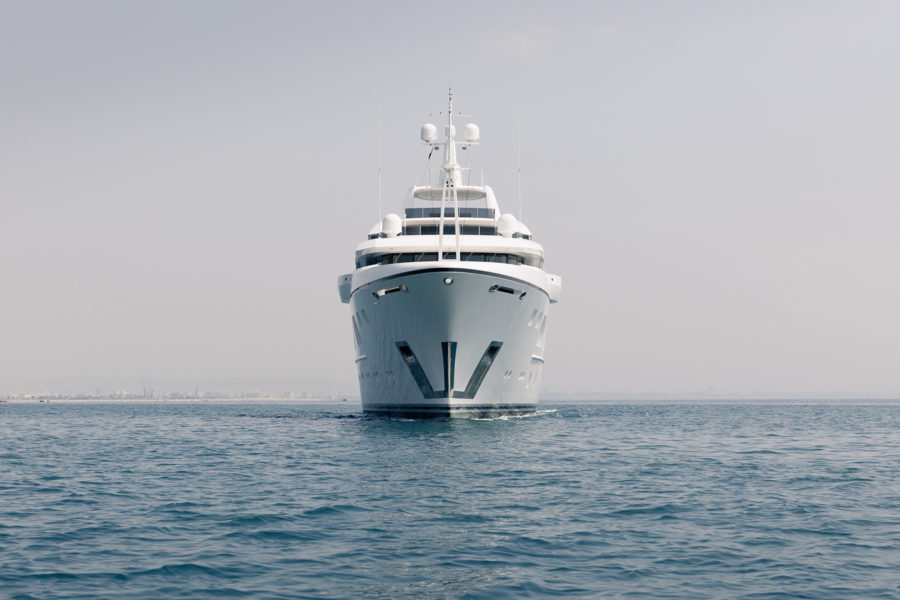
1. Have Realistic Expectations
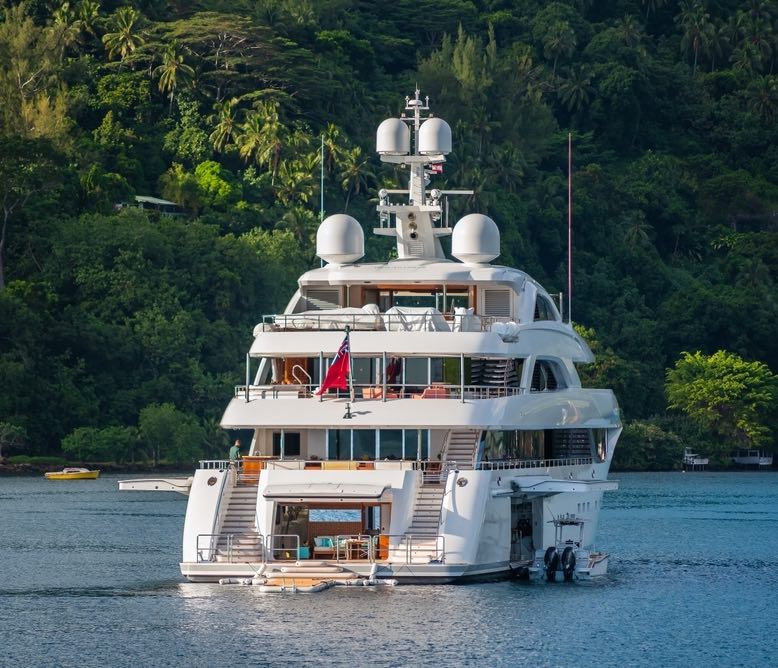
- The superyacht industry is highly competitive and in order to qualify for employment a financial investment is required (training & travel)
- For applicants without relevant experience, being physically present at or near Superyachting hubs when searching for employment is important
- Obtaining the correct qualifications does not guarantee employment and training is not refunded
- Your passport and ability to obtain Visas have an impact on your employability
- Having contacts, experience, and the correct attitude is an advantage
- Working in the industry comes with some amazing benefits but like any career path, there are also disadvantages
- Being an extremely "hard worker" is not an advantage, it is expected
- The quality of work and attention to detail needs to be of a very high standard
- You need to be well-mannered, professional, and well-suited to living in close proximity to other crew
- Presentation matters
- Getting advice from multiple sources including crew who work in the industry is advised
- Different yachts, owners, crew, and itineraries = different experiences
2. Choose the Yacht Crew Department you Wish to Work in
Before joining the yachting industry, it is essential to decide on your career path. The work environment and duties associated with each superyacht department vary greatly. It is therefore advised that you understand the training, duties and requirements associated with each role. The most common roles for crew entering the industry are:
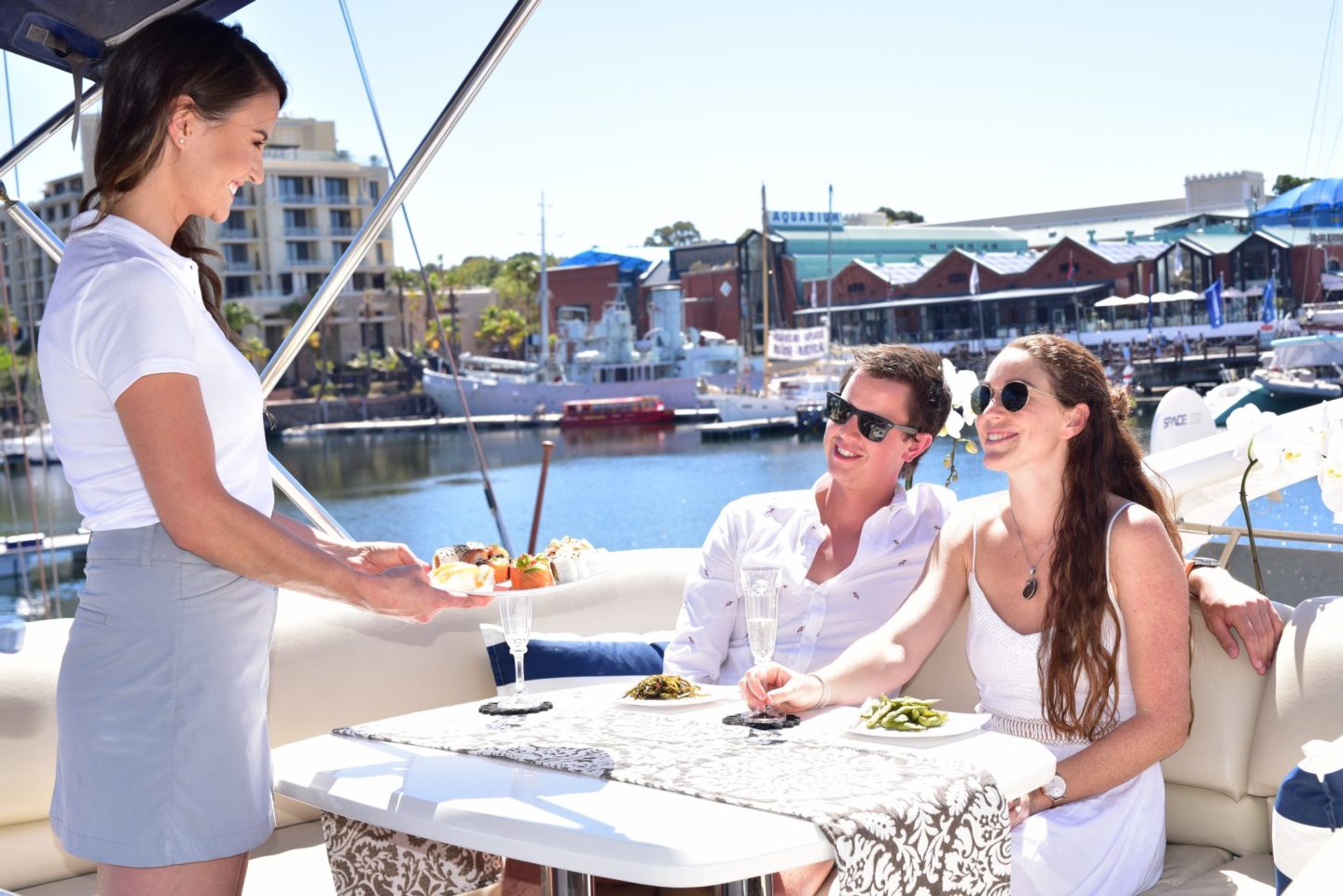
Steward / Stewardess
A superyacht stewardess is responsible for the guest service, housekeeping and laundry. In some cases, the position is combined with an additional role for those who come from a beauty or healthcare background.
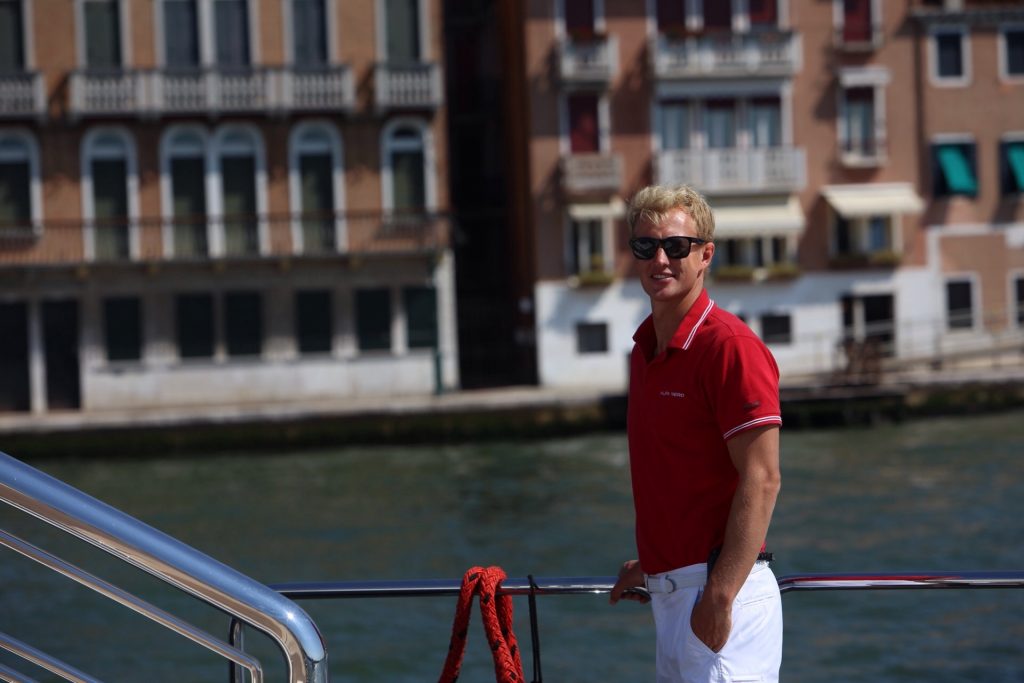
Superyacht Deckhand
A deckhand is responsible for the cleanliness and upkeep of the yacht's exterior. Wash downs, line handling, tender driving, watersports and bridge lookout duties are common tasks for deck crew.

Superyacht Chef
Working as a superyacht chef comes with some unique challenges. Although the skills are certainly transferable, there is specific training and certification required. It can be a tough but extremely rewarding job.

Superyacht Engineer
Working on a yacht or superyacht as an engineer can be a rewarding career path. Although a background in engineering or mechanics is an advantage, it is not a prerequisite. The duties associated with the role are diverse, exciting and require a great deal of hard work.
3. Complete All Mandatory Superyacht Training Courses
Having the correct training and certifications is essential to your employability in the superyacht industry. In order to become a crew member, you will need to have completed the following training:
- STCW 2010 Basic training
- Proficiency in Designated Security Awareness or Proficiency in Designated Security Duties
- Department-specific training for your desired role. (I.e. stewardess, deckhand, engineer, chef, and officer courses)
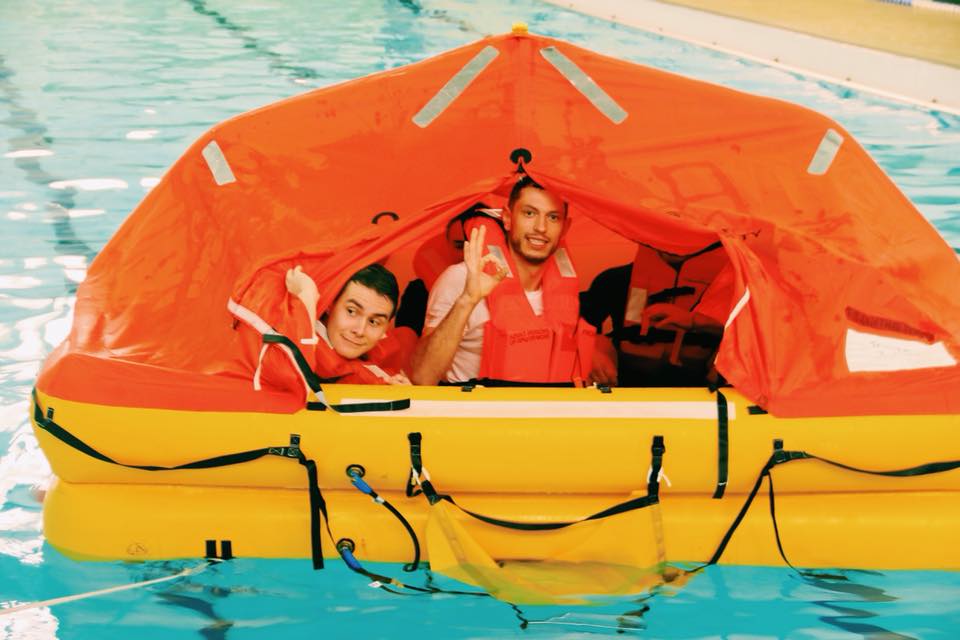
4. Obtain an ENG1 or ENG1 Equivalent Seafarer Medical Certificate

ENG1 Medical Certificate (or ENG1 Equivalent)
Superyacht work can be physically demanding. Ensuring that crew are physically well and able to work at sea is a crucial aspect of the crew and guest safety.
In order to work on a superyacht, you will have to hold an ENG1 Medical Certificate. Because the certification is set by the Maritime and Coastguard Agency (MCA), the examination must be performed by an MCA-approved doctor. The examination is done in order to identify any medical conditions that may prevent you from safely performing your work duties at sea.
5. Choose a Location to Join a Superyacht
When looking for your first job it is essential to be in the right place at the right time. There are a lot of factors to take into consideration when selecting your location, however the two most popular areas for working on a superyacht are:
6. Obtain the Correct Visas & Documentation for the Relevant Superyacht Hub
It is essential to obtain the correct visa for the country you plan to work in. It is important to understand the types of visas that exist as well as the local laws with regard to job seeking.
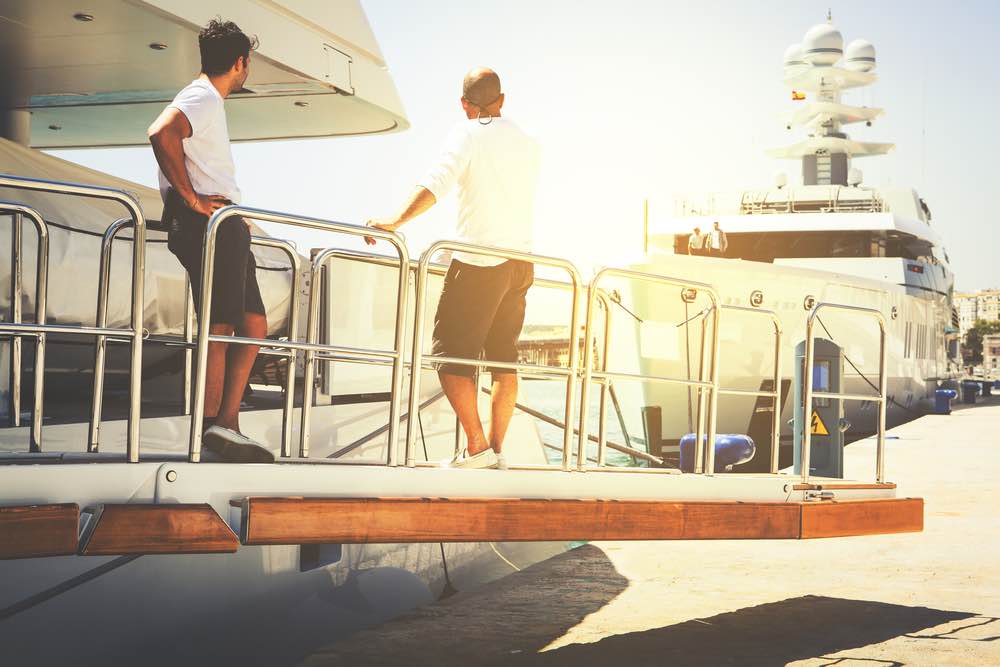
7. Create a Superyacht Crew CV
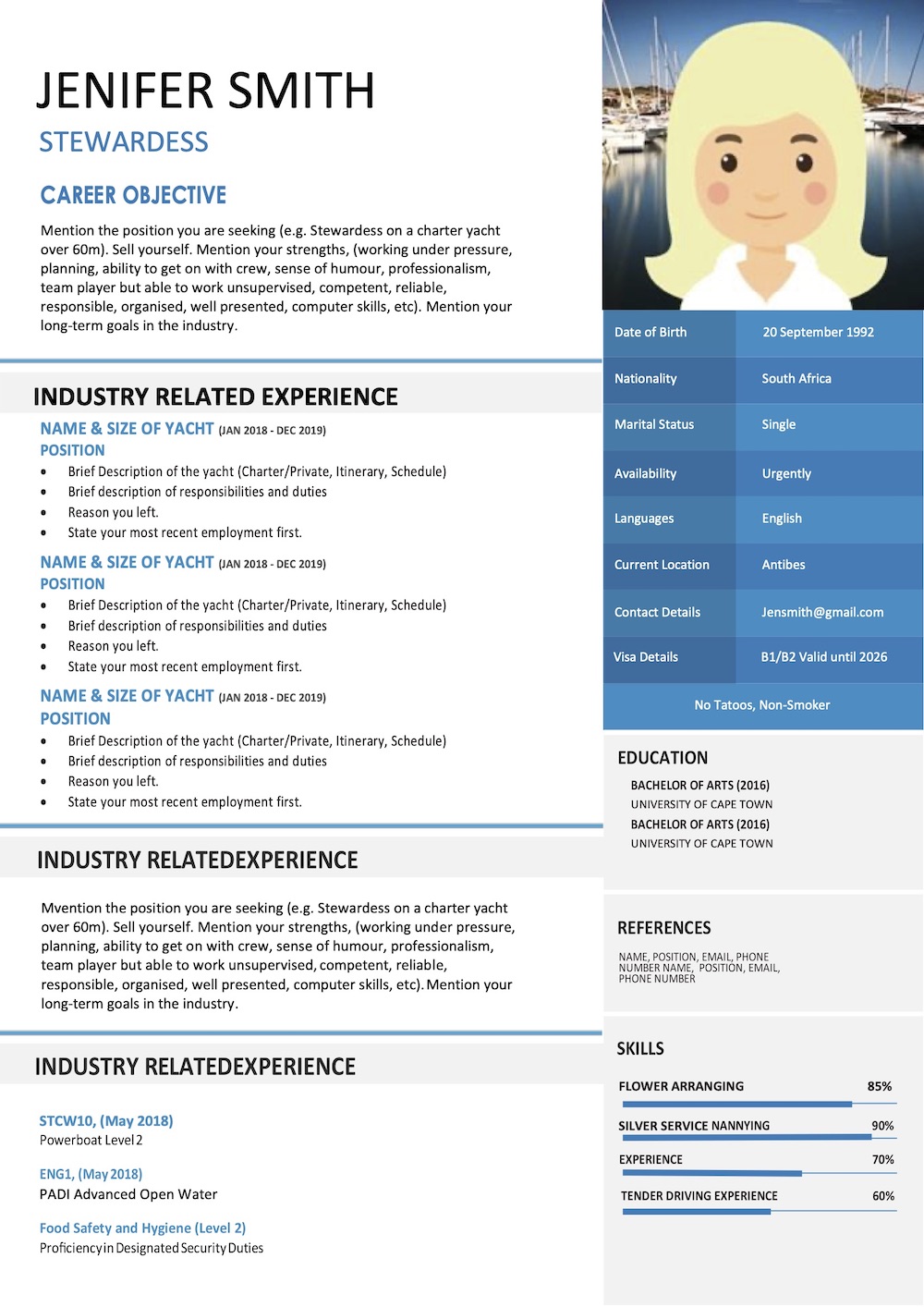
A professional and well-structured superyacht CV will help differentiate you from other job seekers looking to enter the industry.
Superyacht crew resumes have a different structure to normal CVs. If your CV is not laid out appropriately, your chances of being considered for a position are slim.
Examples and more information on how to create a great CV can be found on the links below.
8. Find Superyacht Job Vacancies
Finding the right job in the superyacht industry takes time and commitment. Using credible resources is key:
- The My Crew Kit Superyacht Job Board - Crew Agencies - Social Media Pages - Dockwalking - Networking
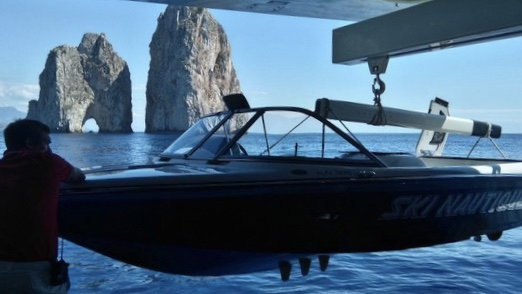
My Crew Kit Job Board:
My Crew Kit has the fastest-growing job board in the industry. Find the latest jobs posted by crew agents, captains and crew around the world!
View the latest vacancies
Crew Agencies
Crew Agencies play an intermediary role between yachts and crew. There are numerous agencies scattered around the main yachting hubs. Registering is a simple process and can be done online, many agencies will then request a short interview in person.
Find out more about Crew Agencies

Social Media Pages:
Online job boards and social media pages are extremely useful ways to apply for jobs as well as to find day work. It is important to only apply to jobs if you meet the criteria (have the correct experience and qualifications).
Be wary of which jobs you apply to. We recommend you only apply for jobs from closed social media groups with active moderators. Fake job posts do occur at times. Make sure you do not meet with or send personal information to suspicious accounts.
Find Appropriate Social Media Pages
Dockwalking:
Dockwalking is the process whereby you walk the docks with the aim of getting day work or even landing a permanent job. It is a gruelling task as there are often long distances between docks and it requires hours on foot. It also involves a lot of rejection as many boats are fully crewed and not looking for employees.
Find out more about dock walking.
Networking:
Your introduction to the world of yachting. The industry is growing exponentially; every year more boats are built, and more crew join the industry. It remains however, a close-knit community that feels a lot smaller than it is. ‘Everybody knows everybody’ and finding a job through a friend or a friend of a friend is often the best way to go. Crew like to work with people they get along with. They are therefore much more likely to hire someone from their extended network of friends than to look elsewhere (provided experience and qualification requirements are met).
A Few Suggestions:
- Network at every opportunity you get.
- Socialise with people you meet at training courses.
- Attend dock parties and BBQs.
- Socialise with the people in your crew house and visit other crew houses.
- Join yacht groups on social media.
- Hang out in the ‘yachty’ bars and restaurants.
- The more people you know in the industry the better off you will be.
Username or Email Address *
Remember me Lost your password?
Username or Email
Get New Password

- Aug 30, 2018
15 Tips on How to be a Good Crew Member (and keep your job)
Updated: Nov 2, 2019
New to yachting? Start off on the right foot. Start off on the wrong foot? It’s never too late.
Yachting is a true melting pot of cultures, backgrounds, race, gender, opinion and sexual preference. Add a couple back to back charters, a difficult boss or a rocky onboard relationship and it goes from melting pot to pressure cooker.
It is so important to take all the above factors into consideration when interacting socially, verbally and physically with each fellow crew member. Granted it can be very difficult but it is ultimately the sign of a professional Seafarer to be able to interact and operate with empathy at the forefront of the mind.
We are all ultimately and intimately in the same boat and we have a responsibility to one another. We have to remember that we form additional sub-cultures within the way we behave as a team especially when regard to senior positions setting the correct example
Here are a couple tips that I feel would help to lubricate sticky situations, ease pressure and ultimately add to your value as a team member, also the value of your program. These are mostly for green crew new to the industry but like the rest of our qualifications we sometimes all need a little refresher.
1. Don’t take shortcuts
Don’t do something that you know is going to end up with someone else having to do it after. That is the opposite of being part of a team.
2. Empty the dishwasher
It’s not rocket science and believe us, the other crew know when you are avoiding the process like the plague
3. Greet your fellow crewmember
Be polite, look up and just say hi. You do live together after all.
4. Respect personal space
It is cramped living with often nowhere to go to escape. If you get the vibe someone is busy or wants to be alone. It is not an invitation to crack the façade.
5. Clean out the sink strainer
If there is food residue in the strainer after you have washed your dish, clean it out. We have yet to be on a vessel where any crew are paid to clean up after others.
6. Offer to help
This can make you or break you. Every time you watch someone work while you sit you put another nail in your coffin regardless of how you justify it to yourself.
7. Keep quarters tidy
You are an adult and living in a confined space with another adult. Wash your sheets once a week and deep clean your head once a week.
8. Be polite to dockwalkers, vendors and your fellow crew member
It costs you nothing to be kind, and if you haven’t been in their shoes already then I promise you will be one day. Whether it’s looking for another job or starting your own company, the industry is smaller than you think and it’s worth it to pay it forward.
9. Break down your boxes, bottles & cans
Its environmentally responsible and it shows respect to the marina staff.
10. Use earphones
We promise that nobody wants to tertiary listen to your YouTube or Instagram videos in the crew mess.
11. Thank The Chef
These guys and gals make your food and most of the time try to please whatever dietary requirements you have. They are a department unto their own that make better friends than foes. Trust us, just say “thank you, Chef.”
12. Make the effort
When you are faced with a “should” or “shouldn’t” I question – make the decision that requires more effort. It shows you didn’t immediately opt for the easy road.
13. The crew mess is not a soapbox
Group discussions are of course welcomed, your opinions not so much. Stay humble. If we had a dollar for every discussion we’ve seen that has turned into a full-blown screaming match…
14. No Excuses
Remember that before you make an excuse, you are most likely talking to someone who has been there and done that. If it is your responsibility, take ownership, it goes a million miles and creates trust and a just culture onboard.
15. Take out the Trash
Doesn’t matter if you are not on watch, if the garbage is full, take it out.
We have all pushed the boundaries, made mistakes and most of the times thought that we got away with them. My experience on the other side as a Captain has taught me that the professional men and women who are responsible for running the teams onboard will often, in order to keep their sanity, choose to take a watcher stance as opposed to confronting the issue on the spot. The good Senior crew out there are trained in the art of detail and situational awareness. They know what your cabin door sounds like a 3 am, they listen who washes their hands after using the head, they know when last your sheets went through the laundry, they know who crushes the empty milk container into the full trash can.
The very minimal work which the above entails will not only help you remain an employed crew member but also hopefully become a habit that will assert you as a notable human being as you interact and make your way through life.
What do you think? Did we miss anything? Let us know if you have any tips to add in the comments below.
Related: Insiders Guide to Days Off in The Med

#WhatdoYachtCrewMake #QualifiedCaptain #Yachting #Tips #CrewMember #CaptainResources #Yachtlife #BelowDeck #yachts #Yachtcharter #Yachties #Howto #Yacht #YachtCrew #crewedyacht
Recent Posts
Adrift Film Festival | The Only Film Festival for Onboard Content Creators
Markets Fluctuate! Stay Calm and Invest On
Yachties Day Out; Top 10 things to do in the Galapagos Islands
Yacht Crew Wanted
Amateur and professional yacht crewing positions available worldwide, from daysailing to transocean for all experience levels.
Search sailing opportunities
For yacht crew
It’s free for everyone to browse though all of our current sailing opportunities. Become a member to contact yacht owners and join their crew.
For yacht owners
Registration and posting is free if you are looking for a skipper or crew. Find amateur and professional crew for short or long term voyages.
Featured sailing opportunities

Americas Cup (AC37) Barcelona 2024
Boat type: Hanse 385
Location: Tivat Montenegro

Solent Yacht Racing - Inshore and Offshore
Boat type: Sunfast
Location: Hamble-Le-Rice, Southampton
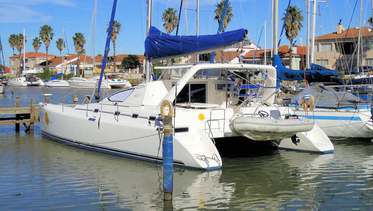
Albania to Tunisia
Boat type: Admiral 38' Sailing Catamaran
Location: Southern Albania

Coastal yacht cruising
Professional sailing jobs, ocean sailing voyages, yacht delivery crew, worldwide opportunities, varied vessel types, all experience levels, mile building voyages, short notice sailing, environmental & wildlife vessels, we are recommended by.

Crewseekers notices

What makes an RYA Yachtmaster?
James Stevens, former Chief Examiner of the RYA tell us.
Skipper for Private Catamaran Charters in Malta
More information

Day Skipper & Yachtmaster theory courses - 20% off
Online RYA theory courses with a great discount courtesy of Crewseekers.
we love sailing as much as you do
Crewseekers is run by experienced, professional sailors offering a friendly and helpful service to yacht crew and owners. We are the original yacht crew introduction agency – established for over 25 years, offering amateur and professional sailing opportunities throughout the world.

How to become Yacht Crew ?
How to become a deckhand a stewardess on superyachts, can a yachting career really be true .
Yes. The industry employs 50 000 crew worldwide. For entry level positions no education is required apart from being at least 16 years old, healthy and willing to work hard.
Is Yachtiecareers free ?
Yes, Yachtiecareers also does yacht recruitment, focusing only on junior deckhand and stewardess positions. We are the only agency in the world to offer this service for free for both crew and Superyachts.
We choose Superyachts carefully, that we know will be a good match for you starting.
How much do i need to pay ?
We can kick-start your career, giving you a basic package for only €12, this is giving you an Introduction, E-book and a 100€ award to spend on kick-starting your career, without making a big commitment. To see if it is right for you.
Are these courses for me ?
These courses has been specifically developed by experienced leaders in the Super Yacht industry for you with no prior experience.
The courses gives you the skills and full service with a personal instructor giving you all you need so that we can employ you on board.
Whether you are just starting or looking for your first job. Yachtiecareers is the best place to start.
What is required ?
The only pre-requirement is that you are minimum 16 years old.
Before starting your first job you need to complete a safety course and get a medical certificate. We guide you through the whole process.
What is the Deckhand Job ?
Deckhand is one of the entry level positions you can select. You will work closely in a professional team operating tenders, jet skis and water sports. Being in charge of washing and detailing the exterior parts of the Yacht.
What is the Stewardess job ?
Stewardess is one of the entry level positions you can select. You will work closely in a professional team in charge of the interior providing luxury service to the Owners and VIP guests.
What is my yachting salary ?
Starting salary for entry level positions start from € 2500-3500 per month. Developing your career salaries are over 10 000 euros per month. Yachts also offer very lucrative bonuses, tips and holiday packages.
How do I start working on Superyachts ?
We recommend getting a certified Instructor and Yachtie Careers training and tools to start. This is a proven way that works.
Before starting to look for work, you need the Yachtie Pro course, this will make you ready to work on board and give you the right skills and training.
Once you have this you will together with your personal instructor design your route. We recommend starting in Antibes or Palma.
Why choose YachiteCareers ?
- We are working in leadership postions on Superyachts.
- We have been in the same situation you were in starting, not having the right guidance
- We have made a package and training , making it easy,fun and a succesful adventure starting and getting a yacht job fast.
What if it does not work ?
After recruiting for junior positions for 10 years, we have designed a step-by-step plan that works. We guarantee that if you follow this plan with your personal instructor, you will be successful.
Or we give you your money back.
Are the yacht courses quality good ?
The first edition was over 5 days of material. But we made it into 5 modules covering what really matters, and what is giving you the job. The rest you can access in our guides and be guided by our experienced crew members.
What is in the yacht training ?
We give you the tools and engaging training to start. Once completed you will be matched with a personal instructor to make sure you follow or plan that you can ask.
We take care of everything from Visas, to CV writing to job interviews, getting a bank account and signing your first contract.
Is Yachting right for me ?
In my experience, everyone I have met, has always been able to offer something of value to us on board. If you like new exciting experiences, travel, meeting friends and grow as a person, it is the right choice for you.
What Certificates do I need to start?
The minimum certification you need to start is Basic Safety STCW, Medical Certificate and Passport. Yachtiecareers gets you all this but so much more. We give you the training to succeed.
We have a 10-step plan for this, that you will do with your Stewardess instructor. It takes work and effort, but we make it fun and an enjoyable learning experience.
We have a 10-step plan for this, that you will do with your Deck instructor. It takes work and effort, but we make it fun and an enjoyable learning experience
Yes! Please check our job board, for open positions. To maximise your chances, make sure you have our CV, references and training to start.
You will have a personal instructor, and all the right tools and guidance.
With us failure is not a possibility.
We have included a full training and service package that you need to a good price, saving you money and time.
They will all be a part of your training and completing it. You will learn from each one.
But after the training, we match you with one that suits your location, yacht type and wishes best.
This is where we give you both trainings, but also all the international certifications you must carry on board. You will have a full training week with hotels on the beach in beautiful Croatia, Spain or France, learning , making friends and starting your career in the only and best way possible.
The best options for starting in the industry.
Most of the crew are clueless of what we require on board, and the once that get on board are not ready for the tasks ahead. Our training solves both these problems.
There are to much old fashioned agencies, irrelevant courses and hate on facebook groups giving the wrong advice, with high fees and low level of knowledge.
This is so you do not have to go through the long periods of mistakes, self doubt and struggles we had to go through starting. We guide you all the way.
STCW Yacht Deckhand Training Europe
All stcw certificates and yacht training to get a yacht job as a deckhand (split, croatia).

STCW Yacht Stewardess Training Europe
All stcw certificates and yacht training to get a yacht job as a stewardess (split, croatia).

Do you need help to become a Yacht Stewardess or a Yacht Deckhand ?
Become yacht crew by getting the right qualifications and certificates, how to start working on yachts .
Simply select your location and position above and get full access to Yachtiecareers Training programme. This gives you all mandatory STCW Basic Safety Certification with a training week in US or Europe.
How to Get into the Yachting Industry ?
Once you have the basic qualifications (STCW) you can register and apply through any of the reputable recruitment agencies – such as Nordic Yacht Support , Yachtiecareers or Yacrew.com. Another way is to “dock walk” looking for daywork. This involves quite literally walking the docksides where superyachts are berthed – such as Antibes, St Tropez, Palma and other Mediterranean ports, looking for daywork or temporary positions.
How Long Will it Take to Get a Yacht Job ?
The Superyacht industry is volatile, things can happen very quickly. You are dock walking and meet a Captain who, because a crew member has left and the yacht is sailing imminently, is looking for a dayworker/deckhand to start immediately, so be prepared to drop everything to come aboard.
On the other hand a Captain could be looking to recruit crew looking for long term employment (referred to in the industry as “longevity”). The Captain could be looking to build a particular type of person who will be able to work with other crew members as a team. It also depends on the time of year you apply.
What are the basic Entry Qualifications to become yacht crew ?
For employment on a commercially registered superyacht, the minimum requirement for all crew is basic safety training. STCW The basic safety training is known as Standards of Training, Certification and Watch keeping for Seafarers (STCW). This safety training was developed by the International Maritime Organisation (IMO). The full course comprises four modules/certificates:
- Personal Survival Techniques
- Fire Fighting and Fire Prevention
- Elementary First Aid
- Personal Safety and Social Responsibility
This is the STCW minimum qualifications to work on ships and on commercial yachts. When you book our Deckhand and Stewardess packages you also get an included STCW Basic Safety Training week in Croatia or Florida to get your full STCW certification and Basic Safety training.
Our packages above include every STCW certificate, Yacht CV and yacht qualifications you need to become a stewardess or deckhand to work as yacht crew on board.
Do you need help to star ? If you drop us a message and a Yachtiecareers Instructor will help you out !
We are usually very quick to respond!
Or get in touch where we usually hang out:
3 next bookings get 50€ free. Use free code “yachtie50” at checkout.
2 next bookings get 50€ free. Use free code “yachtie50” at checkout
How to crew up for global voyages
Serving cocktails in St Tropez is a world away from tackling Antarctic icebergs or the remoteness of a Pacific island atoll. So how do you ensure you get the right team in place? Sam Fortescue reports...
From glaciologists and historians to media teams, an ambitious expedition will draw on experts that go far beyond normal yachting requirements. The 126.2-metre Octopus , widely regarded to be the world's largest explorer yacht, is a good example of this, with a crew of up to 50 people. Finding them, recruiting them and slotting them successfully into the existing crew aboard can make the difference between memories that last a lifetime and operational chaos.
The very testing nature of a remote expedition online makes this process more critical, as crew will have to operate in "boss on" mode for weeks or months at a time without leave, and even simple manoeuvres become mission critical. No wonder, then, that a whole industry has grown up around recruiting and placing capable crew members. We spoke to leading captains, brokers and agents to find out what makes the ideal expedition team, and how to avoid costly mistakes. Naturally enough, their advice begins well before you get the candidate into the interview room.
Before the interview
Recruit from like-minded employees.
Skip Novak runs high latitude adventures in two purpose-built Pelagic sailing yachts. They're no superyachts, however, and "guests" expect to work shoulder to shoulder with the crew in tough conditions. It takes a special kind of sailor to run these charters, and Novak recruits directly from a select handful of round-the-world sail races.
"These girls and guys have experience in exactly this kind of thing – taking amateurs and whipping them up into a tea. They have the people skills; there are a lot of good sailors."
Who to hire: Ocean mapping Remote expeditions cross little travelled and poorly surveyed waters. Working with a bathymetry specialist can return valuable data on the seabed.
Choose experience over qualifications
Novak scoffs at a candidate with a mere 20,000 sea miles on the CV. "50,000 miles sounds a bit better and 100,000-plus is more like it," he says. "The miles are important; less so the certificates." EYOS Expeditions co-founder Rob McCallum takes a similar view, recruiting only guides who have already led 50-plus expeditions. It amounts to just a few dozen people globally.
Recruit couples
Many experienced captains and agents report that couples are a real asset on board – especially on smaller boats. Not only do you get two crew in one, but they can be more stable and reliable, not looking to relationships ashore. "Couples are the ideal, and we've had many over the years," says Novak. "That's really the best scenario, but they should both be yachtmasters in their own right – it can't just be the skipper and his girlfriend!"
Double up on skills to save space
Cabin space is always at a premium, so try to put together a multidisciplinary team. Neal Bateman of expedition guide Cookson Adventures says he is always on the look-out for effective operators who combine several relevant skills. "It's very helpful if the dive guide is also a photographer or the host is a kayaking guide – we can reduce the number of beds required whilst still providing a full team of experts."
"We have a client who won't employ a deckhand who is just a deckhand," says Lisa Ricourt of recruiter Hill Robinson . "They need to be a surf instructor or a videographer as well; or a medic who is also a hairdresser."
Who to hire: Scientists A recent Cookson expedition to Antarctica hired Dr Robert Pitman, a leading killer whale researcher, whose team spent several weeks at Cape Horn. “We were able to organise and support research into an incredibly rare – and likely new species – of killer whale,” says Bateman. A biologist aboard another Cookson trip off southern Italy uncovered an ancient Roman shipwreck and a type of coral thought extinct in the region.
Think quartermaster's stores, not Michelin stars
Laying on a culinary pièce de résistance that makes jaws drop on the Riviera is a highly-prized skill, but it's of limited value far off the beaten track. "Service and provisioning are very different in remote regions," says Gayle Patterson of expedition leader Pelorus. "You need to look for meticulous, forward-planning crew members and chefs need to be creative with foods they can source and manage stocks they have onboard. They cannot afford to waste anything."
Handpick your guides
They must have a good rapport with the captain of the yacht. This is all about understanding the social dynamics and personalities on both sides. "It works well, and we regularly see social bonds forming; many of our regular clients request 'their guide' a year or more in advance," says McCallum of EYOS.
Who to hire: Astronomers In many remote destinations where light pollution is non-existent, it’s wonderful to have an expert to share the myths and meanings behind the stars.
Bulk up with technical skills
"Engineers need to carry enough spare parts and be able to repair the yacht themselves instead of booking specialists to fly out to the yacht's location," says Patterson. "This is the same for a bosun/deck crew." Ensure that the crew offers a broad swathe of technical expertise, from GRP and woodworking repairs to IT, comms and watersports.
Ex-forces have the right qualities
Ex-forces are a good fit for the yachting sector because they understand rank and teamwork while being used to living in confined space for long deployments, says Andrew Holme of Insignia Crew. "It's not a foreign environment for them."
But McCallum at EYOS argues that skills with a gun is not a particular asset. "Guides get weapons training and, in the Arctic, expeditions must have a high calibre firearm to deter bears," he says. "If you're having to pack a firearm because you're worried about your personal safety, you're probably holidaying in the wrong spot."
During the interview
No detail is too small.
Listen out for tell-tale details during an interview – they can be valuable pointers on whether someone will find their place in an existing team. Sharon Rose of the Bluewater crew agency says: "From their hobbies and personal interests to their humour, from sports to music, the smallest thing can make a big difference to how well someone fits in. A crew member that has a big family and shares space with siblings may find it easier on a larger vessel whereas an only child who is more independent may prefer a smaller yacht."
Go beyond the CV references
Even mediocre crew can usually muster a couple of former employers’ references, so to get the real measure of a candidate during an interview, look beyond the obvious. "I will often seek at least three references not included on the person’s CV," says experienced captain, Chris Durham. "Alongside personal references I have also found that the use of psychometrics and 1:1 feedback from a specialist trained to interpret these tests can aid the hiring process in finding the right character for the position."
Who to hire: Anthropologists When cruising remote communities, there are requests for experts not just on the country or the region, but someone who understands a specific ritual. EYOS once had a client who wanted to explore the debate on whaling, meet the hunters and even eat whalemeat. His Danish guide spoke Inuit and bridged the gap on a tricky subject.
Ask about extra-curricular activities
It’s a rare CV these days that extends beyond a page in length. But that means you have to ditch lots of interesting information. "Dig into hobbies as well," says Suzy Jovanovic of recruiter Hill Robinson. "As an interviewer you have to be curious to see how well you can get to know a candidate." She cites the example of a recent recruit who had to be persuaded to talk about 18 months spent working on animal conservation in Africa.
Who to hire: Media team A dedicated media team could be made up of a land-based and an underwater specialist photographer, for example. Neal Bateman at Cookson says: “For some clients, we have the media team edit on the fly so they can screen daily highlights of the wildlife they’ve seen in their yacht’s media room every night.”
Consult the crew
Durham also likes to hear what his crew think of a candidate before making up his own mind. "Our interview process is in at least three stages," he says. "Generally, we interview the candidate from three angles. Above, beside and below, each individual who interviews the potential candidate has equal equity in the decision to hire or not to hire."
This approach helps to pinpoint a key red flag, which is arrogance. "I have found that individuals with a large ego are not suited to a collaborative, team environment. It is very hard to teach and guide someone in any position who believes they already know it all."
Who to hire: Historians Another EYOS client wanted to see where in the Pacific their grandfather had served in WWII. The head of the New Zealand Defence Force joined the expedition and spoke about WWII strategy, bringing to life what the generals 70 years before him had done.
Socialise with a candidate before you hire them
Interviews are often too formal to offer the best guide as to a person’s potential performance or their true character. That’s why Durham likes to place candidates in different situations before making up his mind. “If you have the opportunity to socialise or travel with the candidate this can tell you a lot about them: how they treat others, how they deal with pressure and so on.”
Who to hire: Medics Emergency medical skills could be vital when you sail off-piste. Former NHS and ex-forces staff are good sources for paramedics, says Holme at Insignia.
Social confidence is a plus
Senior guides or staff require an armoury of soft skills when dealing with owners who have been highly successful in their own field. Among these diplomatic skills is the ability to say ‘no’ when required. “We’ve had situations where people want to get closer to a polar bear; or people want to push further into a protected area,” says McCallum at EYOS. “We are masters at enabling opportunities that are extremely challenging. But sometimes there are hard stops for safety reasons.” As well as fine field skills, they also need to have the confidence to keep their end up socially – entertaining a table at dinner or holding a room spellbound with an explanation or anecdote. These are skills that take time and experience to develop.
Who to hire: Glaciologists A recent EYOS expedition shipped three leading glaciologists because guests had a particular interest in studying ice sheets and the glaciers that are spawned from them.
Social skills, not social media skills
Expeditions typically force crew to be in closer contact than usual for a longer period away from port. “They need to be prepared and happy to be away from civilization and a high-speed internet connection,” says Patterson. “A day off for a crew member in Raja Ampat is certainly going to be different from a day off in Antibes!”
After the interview
Be more generous with the rotation.
Factor in more crew leave if you are heading on a circumnavigation. "Remember: crew work seven days per week regardless of when the guests are on board," says Patterson at Pelorus. Explain what he means here: "Having even a 4:2 rotation in place will save you money in crew recruitment costs." This is especially true of an expedition yacht, where the traditional ‘yachting seasons’ don’t apply. Offer the option of free flights? What extra facilities can you put on the boat to help them switch off?
Who to hire: Photographers For clients with a passion for photography, an expert National Geographic photographer would be able to expand their skills and get the best out of a striking, remote destination.
Foster collaboration and communication
Once the team is in place, they must be nurtured by good communication, mutual respect and daily debriefings, according to superyacht captain Chris Durham. "Encouraging a personal rapport between individuals between departments, I have found that crew are able to manage conflict more successfully and align together in times of high stress."
This is especially true when dedicated expedition staff are brought into an existing team, "Communication is paramount, so daily briefings to discuss the experiences coming up are essential so the team can troubleshoot any issues and ensure all the equipment is fully operational,” says Bateman at Cookson.
More stories
Most popular, from our partners, sponsored listings.
- Yachting World
- Digital Edition

How to be a good crew member on a long ocean passage
- June 10, 2016
As an experienced skipper, ARC weather man Chris Tibbs describes what he looks for in a good crew member to cross the Atlantic with him

Photos: Paul Wyeth
Matching skippers and crew can be a difficult process and while there are characteristics we can identify in a good skipper, there are also some points that need to be made about being a good crew member.
When I sailed on large racing boats it was often joked that the foredeck crew were like mushrooms – kept in the dark and fed on manure (although that wasn’t the word used). When it comes to cruising it should be somewhat different as not only are you going to have to sail together, you will be living together for a period of time.
This might be three weeks or more for a transatlantic crossing and even longer in the Pacific. It is therefore important that crews, skippers and owners all get along, not only on the sailing side, but also socially living in a confined space.
It is almost impossible beforehand to know how well you will get on together, and experiences from the ARC can be mixed. Good friends might fall out, yet crew joining at the last minute – sometimes having only briefly met in a bar – have worked out brilliantly.
See also Chris Tibbs on How to be a good skipper
Good company
I find that the older I get the more important it is that I enjoy the company of the people I am sailing with whether as crew or skipper. After a long passage or extended cruise it would be nice to think that we are all friends for life. This sometimes happens, but at other times yachts might arrive at the end of their transatlantic with crew leaving as soon as docklines are made fast.
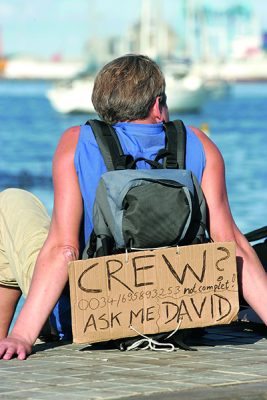
So what makes for a good crew and a harmonious passage? A passage is a combination of many parts and is much more than just the pure sailing. There will be problems and some gear failure and how this is dealt with will reflect on everyone’s enjoyment of the passage.
With a long racing background it is important to me that the boat is sailed safely and efficiently, but unless in a race, at the end of the passage we generally remember how much we enjoyed it rather than the time taken, although for a rally there is that all-important finishing position!
Willing and flexible
At the top of my list is for willing and flexible crewmembers. Although I am well aware that everyone has an opinion, and I am happy to listen, any decision is ultimately the skipper’s responsibility and we have to live with the consequences of that decision. So once your point has been made respect the skipper’s decision; it is very divisive when crewmembers either continue to challenge the skipper or take an “I told you so” attitude.
For a crew looking for a position honesty is important, particularly about ability and experience. Don’t brag as there is likely to be someone on board who has sailed in bigger winds and seas, or further and longer than you, so you will be caught out if you’re embellishing the truth.
It is also useful to share expectations for the trip, such as what you want to achieve and learn. An honest appraisal of seasickness and how much sleep or food you require is also important so differences can be discussed and, from a skipper’s point of view, knowing who may be incapacitated by seasickness helps in planning watches.

Be tidy with your own kit and also the boat’s kit. Nobody likes being woken by the on watch searching for something that has not been put away. When sailing in the tropics, typically a transatlantic, there are almost 12 hours a day of darkness, so knowing where your kit is and being able to find it at night is important.
Likewise it is not difficult to learn where each rope on the boat leads, and which jammer is which. However it is difficult to helm when flashlights are continually being switched on and off to identify a rope that is constantly being used. The use of lights on a dark night is occasionally necessary, but it is also important not to destroy night vision. A little thought about where light switches are, which ones are for red lights and where the more usual lines lead will help relations with other crewmembers and the skipper.
Living together
A long passage is not just about sailing; we all have to live together and get along and this starts in the galley and below decks just as much as in the trimming of sails and helming. There will be natural divisions as skills vary and some will be more comfortable in the galley than on the foredeck, however keeping the boat running and keeping up with maintenance as well as with repairs and food are just as important. A long passage is a team effort not a competition so give other crewmembers a chance.
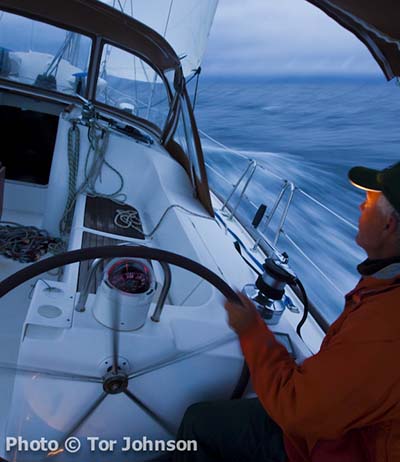
Night watches go by quickly with good conversation and interesting discussion. Away from phones and computers on a long ocean passage you have time to talk. People are interesting and asking crewmates about themselves can be very revealing.
Ocean passages tend to throw together a wide mix of people with interesting stories; it is a shame to dismiss anyone just because they have not done a great deal of sailing. There will often be hidden talents on board that for the asking go unnoticed.
Although we all get tired and grumpy on occasion, we need to be tolerant of others and an angry response will take a lot of undoing; sometimes it is better to bite your tongue and not respond in the heat of the moment. If something really is bothering you, better to address it at a later, less stressful time.
Notes from a skipper/owner
Having run boats professionally and now having our own boat and cruising, perspectives do change somewhat.
We are allowing people onto our pride and joy, so every bump, scrape and ding is felt almost personally. I want crew to be very careful with things like safety harness hooks as they cut chunks out of the varnish very quickly. It costs a lot to keep a boat well maintained, so carelessness quickly becomes irritating.
Personally, I find laziness a cardinal sin. I have seen crew that are lazy on deck, lazy in the galley and generally not pulling their weight. Enthusiasm is everything and while I will easily forgive a lack of knowledge, as the sailing side of things can be taught, lack of care and avoiding their fair share of the chores is unforgivable.

Respect boat rules – if no wet oilskins are allowed below try to respect this. Most boats have some rules that are usually not very onerous and are there for a reason.
Money may well raise its ugly head and having clear ground rules ahead of the voyage helps – it is an expensive business taking your yacht on long voyages. The boat is legally responsible for repatriating crew although most cruising yachts expect crew to fund their own travel.
Small acts can make all the difference – on our last crossing with the ARC not only did our crewmembers take us out for our crew dinner at the end of the rally, they also bought pictures of us crossing the finishing line. Both were unnecessary, but a really nice thank you.
Aggravating habits
When an old racing friend was asked what he would like for the boat his answer was always for a “glass crew”, as there always seemed to be someone in the way to spoil his view of the instruments or when docking. My own pet hate is talking to the wind. It is impossible to hear what is being said when crew talk into the wind, rather than to the person they are trying to communicate with. It is a simple thing, but as communication on board is so important it’s best to be clear with it.
And finally, don’t argue – once a decision is made get on with it. Adding doubt to a difficult decision or rehashing an argument is wasteful in time and effort and sometimes things have to be done in a hurry. There will be time afterwards, over a cup of tea, to talk through manoeuvres and what might be done better in future.
Putting a good crew together for a passage is not always easy. Getting time off work for long-distance cruising is just not possible for most people so you will often end up sailing with people that you do not know very well. Sometimes this works out perfectly, but other times it can be a bit of a disaster.
It would be nice to have a trial or demo sail with prospective crewmembers, but this is usually not possible so compromises have to be made. At the end of the ARC there are always interesting stories, but it must be said that the crews of the vast majority of yachts crossing the Atlantic arrive as friends and boats with significant crew conflicts are few and far between.

Chris’s own crew for crossing the Atlantic aboard his yacht Taistealai
5 tips for a good crew
- Be willing and flexible.
- Honesty is important, particularly about ability and experience.
- By all means contribute to any discussion, but respect the skipper’s decision.
- Be prepared to muck in with all onboard chores equally.
- Be tidy and careful – this is someone’s home.

Chris Tibbs is a meteorologist and weather router, as well as a professional sailor and navigator, forecasting for Olympic teams and the ARC rally. He is currently on his own circumnavigation with his wife, Helen. His series of Weather Briefings can be seen here
Chris Tibbs prepares his own boat for an Atlantic crossing
The best route for an Atlantic crossing
Taking the northerly route across the Atlantic
Offshore weather planning: options for receiving weather data at sea
as well as Chris Tibbs’s series of Weather Briefings
Also….watch this video interview of Paul Dunn, who crewed on a German yacht in the ARC. He had never met the three other crew before, but they had a great time. The experience gave him some interesting insights

The Quick & Easy Guide to Superyacht Chef Careers

This article is the latest instalment in our series of guides on superyacht careers. We’ve already covered deck , interior and engineering careers, but today it’s time to get delicious and discuss the career pathways for chefs on board yachts.
As always, the information in this guide is brought to you by the experts at the careers guidance platform, Academy by Ephemeris . Start or advance your yachting career with Academy by Ephemeris, the only online tool that connects superyacht crews and aspiring crew with yachting industry training providers worldwide.
What does a superyacht chef do?
A superyacht chef is in some ways, the central character in a guest or owner’s experience on board. They are the unsung heroes that use the culinary arts to turn yacht voyages into unforgettable memories, and it’s all done from the galley - the marine industry term for the onboard kitchen.
The chef’s primary responsibility is planning, preparing and cooking food for the guests/owner, the captain and the crew. But there’s a lot more to the chef’s job, too.
The chef’s daily responsibilities include regularly provisioning all required food items, which also entails frequent food inventory records to ensure that any food items required for a particular trip or charter booking, are ordered and delivered on time. They are also responsible for checking that all received food items meet the yacht’s standards, following which all items must be safely and correctly stored according to all required food safety and storage standards.
Galley safety and sanitary standards are also the chef’s responsibility, and if other galley staff are on board - as they may be on larger yachts - the chef is responsible for managing those staff, too.

How do I become a superyacht chef, what qualifications do I need?
Generally, you would begin by obtaining formal food preparation training, such as an NVQ (National Vocational Qualification) Diploma from the City & Guilds framework.
Next, you will need a minimum of a Level 2 Food Hygiene Certificate. This internationally accredited certificate is a mandatory requirement for all food handlers and servers. It teaches the basic knowledge of how to safely store, handle, cook and serve food onboard a superyacht in a hygienic and safe manner.
For chefs working on commercially registered yachts (charter yachts) and/or chefs cooking for 10 or more crew, a further requirement - the Ship's Cook Certificate – was introduced as part of the Maritime Labour Convention (MLC, 2006) in 2014.
Rather than being a course to teach superyacht standard food for guests, the Ship's Cook Certificate was created with the purpose of ensuring that cooks working on commercial vessels have the basic skills and knowledge to cook for the crew on board.
“The Ship's Cook Assessment for the Certificate is designed to ensure a basic minimum standard – it is not designed to catch people out. If you know how to cook and you operate using best practice, there is no reason why you will not pass the assessment,” explained Chef Duncan Biggs, MD of OceanWave Monaco.
In order to attain a Ship’s Cook Certificate, you will need the following:
- Proof of at least one month’s sea time, at sea or alongside.
- Proof of at least one year as a chef or as a cook in a professional working environment.
- Certificate of successful completion of the Assessment in Marine Cookery.
- Class-based Food Safety Level 2 (MCA - Maritime and Coastguard Agency) or Level 3 (Cayman Islands).
A formal competency check via the Ship's Cook Certificate of Competency is mandatory, even if you hold an SVQ (Scottish Vocational Qualifications) or NVQ Level 4 to UK standards.
All crew, including chefs, need an STCW (Standards of Training, Certification and Watchkeeping for seafarers) certificate in order to work on a yacht. This is a five day course that covers general safety at sea. You will also need to obtain an ENG1 medical certificate from a certified medical practitioner.

Is it better to start off working onshore?
The majority of yacht chefs train and develop their skills onshore first before pursuing a cheffing career at sea. Chefs who have had extensive training and career experience on shore, particularly if they have worked in fine dining or Michelin-starred restaurants, are highly sought-after on yachts.
Is cheffing at sea any different to cheffing ashore?
Yes, it’s very different!
A head yacht chef is responsible for meal planning, menu development, food provisioning and preparation, cooking and galley cleanliness. On smaller yachts, chefs often work alone, further adding to their workload.
Additionally, superyacht chefs - especially those on board charter vessels - need to have the ability to perfectly cook a wide range of cuisines and accommodate a wide range of dietary preferences, including gluten free, vegetarian, and vegan options, all prepared to a very high standard. Guests accustomed to dining in the world’s best restaurants expect a similar level of culinary perfection on board.
There are logistical differences, too.
If a chef onshore needs an ingredient at the last minute, it can often be sourced relatively quickly and easily - sometimes even from a nearby store. At sea, however, a chef must be prepared to be much more resourceful given that it’s more challenging to source provisions, particularly at short notice, so a missing or spoiled ingredient can otherwise quickly become a disaster. Though larger yachts typically have more galley staff, it is generally still not to the extent of kitchens ashore and even then, yacht chefs must simply be more resourceful while being prepared to be busy for longer hours every day.

What are the different roles within the yacht chef pathway?
Yachting’s culinary world offers several distinct roles.
Junior Chef: This role offers newly trained chefs a chance to familiarise themselves with the nuances of yacht kitchen operations while learning vital occupational skills from more experienced professional chefs. By assisting seasoned chefs, junior chefs lay the groundwork for their journey ahead.
Sous Chef: Positioned as the second-in-command to the head chef, the sous chef becomes the cornerstone of the galley, often stepping in to lead the culinary charge.
Specialty Chefs: For those with a unique culinary passion, such as pastries or sushi, specialised roles - when available - provide a platform for niche creativity.
Head Chef: At the apex of the galley staff hierarchy, the head chef orchestrates the galley's operations, ensuring every dietary requirement and preference is exquisitely catered to.
Conclusion
Climbing the ranks in the superyacht chef’s culinary world necessitates a commitment to continuous learning. Of course, exploration of diverse global cuisines and networking within the superyacht community can propel your career substantially, but getting started requires having the right training. That’s where Academy by Ephemeris comes in.
Using the Academy by Ephemeris platform, you can access the training you need to begin, develop or advance your chef yachting career - or any career on yachts - wherever you are in the world. Academy by Ephemeris is designed to connect you with the right courses from carefully vetted training providers worldwide, whenever you need them.
Finally, a big thank you to Chef Duncan Biggs at OceanWave Monaco for his assistance with this article.

Post your comment
You cannot post comments until you have logged in.
No one has commented on this page yet.
RSS feed for comments on this page | RSS feed for all comments
Search articles with keywords

Do You Need A Crew For Yachts? Helpful Tips (With 6 Examples)
Whether or not you need a crew for a yacht depends on several factors.
In this article, we will help you figure out exactly what you need.
Table of Contents
Here’s When You Need a Yacht Crew:
With the appropriate boat licenses, you can typically operate a boat up to 75 feet without a crew. However, most yachts need crew for docking, launching, caring for guests, and watching for danger or other boats. Without a crew, an autopilot feature may be crucial to help with keeping you on course.
A crew can help because someone must always be on watch to look for nearby vessels or other dangerous situations, as well as docking
Here’s everything you need to know about when you will need a yacht crew:
What Exactly do you Need a Yacht Crew for?

Yacht crews do a lot of things to help maintain the boat and keep it running smoothly.
Some of these duties include:
- Launching and docking the boat
- Accounting or managing the operating expenses
- Cooking, bartending, or other types of services for guests
- Engineering and/or regular maintenance for onboard appliances and ship mechanics
- Piloting and driving the boat
- Cleaning the interior and general housekeeping duties
- Supervising guests and other crew members on board
Here’s a list we made with 10 typical tasks performed by the crew on a yacht . It’s a great read if you are considering whether you will need a crew or not!
Depending on your boat and your experience, you might not need all of those duties to be done. For example, superyachts might need a cook, while sportfishing yachts might not (even if they have a grill).
Some boaters prefer to do the piloting and engineering independently, while others want to lounge around and enjoy the weather.
Make sure you analyze your reasoning for having a boat before you hire people you might not need to employ.
Do you consider boating to be a social activity? Or do you prefer to boat alone, where you can enjoy the peace that can only be found on the water?
If you’re in the latter group, you may have pondered over one or more of these questions before:
- Can I pilot this boat on my own?
- Do I need a crew?
- Why do I need a crew?
What is the Biggest Boat I can get Without Having to Hire a Professional Crew?
It really does depend on your experience with a recreational boat and how comfortable you are on your boat.
For avid and experienced boaters, anywhere from a 30’ to a 74’ sportfishing boat is a decent size that they can handle independently.
There are many things to consider when figuring out what boat to buy , especially if you plan on operating the watercraft on your own.
Remember that you’ll probably need help (even if it’s just your family and/or friends) who can help you cast off the lines and tie up when you need to dock.
Also, keep in mind that you’ll need an autopilot if you plan on using a powerboat on your own. Here’s everything you need to know about which yachts have autopilots.
Yes, many people can handle these tasks on their own, but they also have the help of electronic charting and steering, pod drives, and bow thrusters, which can help hold the boat’s position while you casually tie off.
Which Licenses Do I Need to Operate a Yacht Without a Crew?
There are several different licenses you need to know about when we are talking yachts.
Especially if you are bringing guests (if they are paying for the trip).
For more information, here is everything you need to know about boat license types .
Does Every Motor Yacht Need to Have a Crew?
When it comes to boating, there are many different types of people drawn to this recreational activity.
Some want to race, others fish, while others want to cruise around the harbor while catching some rays. In addition to that, some want to spend that time with friends and family, while some want to enjoy some peace while out on the water.
There is nothing wrong with being a “do-it-yourself” type of boater, whether you’re into sailing yachts or motor yachts. However, there are plenty of reasons why boating with a crew can come in handy.
Safety & Emergency Help:
Having a crew is safer.
It is always safer to go out on the water with other people. In emergencies, when something unexpected happens, or even if you need a hand with something, it is safer to have other passengers and crew members there for you to count on.
When you are out on the water with a limited crew or yourself, you have to be extra careful since there isn’t anyone there who can rescue you or help you get out of a tough situation.
Wearing a life jacket regularly all by yourself can get cumbersome, after all.
Because of that, short-handed boatmen often use the “Lifesling,” which is a horseshoe-shaped collar secured to a victim to help get them back on board.
Some offshore sailors tow a long line behind the vessel for a crewmember to grab if they fall overboard.
Guests & Cleanup Help:
If your yacht is commercial or hosts guests, operating it is like owning a small hotel.
Crews are a must when you have guests onboard, as you will not be able to pilot the yacht, dock, launch, clean, cook, serve, and entertain guests.
Furthermore, you shouldn’t have to!
Guest experiences are made better when you have all hands on deck to help keep things running smoothly and safely. Taking on that burden alone is not necessary.
Family Yacht or Single Captain:
Some families like to own their own yacht and don’t care about crews or getting help out on the water.
Families of four or five could potentially crew the yacht themselves!
Therefore, if your ship is for personal and private use and you don’t want to hire a crew, make sure you bring enough people with you to help you take care of the ship’s requirements.
If you are a single sailor, however, and you captain, dock, launch, and maintain the ship yourself, make sure that you have open radio communications if you ever need help and have to call the coast guard.
What Do I Need to Own and Sail a Yacht?
If you choose to set sail on your own, it is important to have the right disaster and spare equipment on board in case of emergency.
A common checklist of everything you need to do, from trailering to getting underway to cleaning the boat, can be handy in emergencies.
After all, it can be difficult to think of what to do when your adrenaline is through the roof.
Let’s go over some basic emergency equipment for your boat as well as some handy spare parts you should keep close at hand:
- PFD’s, horn, fire extinguisher, and other appropriate safety equipment
- Floatation devices and emergency raft
- VHF radio, a cell phone, or a satellite phone
- A pair of binoculars
- Maps and charts
- Two to four fenders
- Some extra dock and anchor lines
- An extra plug for your hull drain
- An extra set of keys
- A spare bearing set and tire for your trailer
- Some engine oil (just in case)
- A basic tool kit (look and make sure that the tools match the hardware on your boat)
- A couple of flashlights
- Duct tape (which will always come in handy)
- Brush for your boat
- A trailer coupler lock
- Your boat cover
- Some sunscreen and a hat (and other skin protection)
- Spare alternator belt
- Spark plugs
- An extra set of bearing and hubs
- Extra prop and hardware
- Another water pump kit
- Spare flags for emergencies
What Training do Crewmembers need to Operate a Big Yacht?

If you decide to get a crew, each member of your crew must have different qualifications, based on their role on the boat.
For professional crew members, two of the bigger training certificates are:
- STCW Basic Safety Training – This should be required of your entire crew to work on a charter yacht or a commercial yacht. It is not required for private boats, but it is highly desirable and wouldn’t hurt to have on hand.
- ENG1 Seafarer Medical Certificate – This is a medical examination required to prove whether or not you are fit for working on the water. An MCA-approved doctor must issue this.
Each Crewmember Must Have the Following (by job description):
- MCA Efficient Deckhand training (EDH)
- Deck/Yacht training
- VHF radio training
- RYA Radar training and the RYA competent crew training
- MCA Proficiency in designated security duties (PDSD)
- RYA Powerboat (at least level 2) and the RYA Tender Operator
- General GRP and carpentry repairs
- An interior crew-training course or courses, such as the PYA GUEST Program
- STCW Proficiency (Medical First Aid) and the STCW Proficiency in Survival Craft and Rescue Boats
- VHF Radio Short Range Certificate (GMDSS/DSC)
- RYA Powerboat (at least level 2)
- PWC Personal Watercraft Proficiency
- MCA Proficiency in Designated Security Duties (PDSD) and the MCA Human Element, Leadership and Management (HELM) at Operational Level
- Deck / Yacht Rating
- AEC Approved Engine Course
- MEOL Marine Engine Operator License
- Marine Diesel Training and Experience
- Auxiliary Equipment & Basic Ship Construction
- MCA Sea Survival for Yachtsman
- Advanced Fire Fighting
- STCW Proficiency in Medical First Aid
- Chief Engineer Statutory & Operational Requirement
- Applied Marine Engineering
Final Thoughts:
Having a crew aboard your vessel will help you ensure that you have a fun, leisurely cruise or voyage.
An experienced crew can help ease your tensions and worries. A crew can help alleviate the chaos and energy that might come with frantically doing things on your own.
There are many yachts out on the water, which is operated “short-handed.”
This means that it is being operated on less than the usual number of crew members that would typically be used.
In the past, it was common practice that 70-foot boats had dedicated captains and crew members (at least one). These days, 80-foot boats are being crewed by husband-wife teams.
If you choose to go this route, make sure to:
- Choose the right yacht for you (the right size and type)
- Outfit the yacht for extra amenities, balanced with simplicity (don’t make things overcomplicated)
- Prep yourselves by talking through scenarios beforehand, planning, and taking your time.
- Consider anchoring via remote controller for the power windlass.
- Have the appropriate emergency gear on board.
Being a short-handed boater can seem intimidating, but it can be a wonderful adventure as well.
Click to share...
A Beginner’s Guide to Chartering a Yacht
By Chrissie McClatchie

With the pandemic driving a boom in superyacht charters , more and more people are taking to the water for their first yachting experience. But while some superyachts can cost more than a million a week to charter, you don’t need to outlay seven figures for your own yachting vacation.
Wondering what else you need to know before stepping on board for the very first time? We’ve turned to experts in the yachting industry for their insider intel on how to charter a yacht like a pro—from how much it will run you, to where to go, and well beyond. Read on.
Do I need a charter broker, and how do I find one?
It’s a charter broker’s job to match you with the right yacht and crew—and then take the lead in planning the entire experience. Professional bodies such as MYBA The Worldwide Yachting Association act as a database of industry-recognized professionals. But the best source for finding a charter broker is often your own network. “Building up a relationship with a charter broker is very important,” says Jacqui Lockhart, a Monaco-based broker at Camper & Nicholsons International . “If possible, look for a recommendation from a friend.”
Once you’ve found the right broker, communication with them will be key. “Take the time to be as detailed with your preferences, such as dietary requirements, likes and dislikes, and preferred activities, as possible,” says London-based broker Charles Crane of Edmiston . “This will give us and the crew the best information to make the charter a success and tailored to perfection.”
How much should I be prepared to spend?
“The entry point is around $40,000 for a week on a yacht 82-feet upwards that can sleep six people," says Lockhart. What can take first time charterers by surprise is that this isn’t an all-inclusive figure. “The charter fee covers the hire, the crew, the insurance—everything that’s linked to the yacht,” Lockhart continues. Anything specifically for the client is extra—including food and beverages, fuel, and dockage. As a rule of thumb, budget for an extra 30 percent on top of the baseline charter figure for these extras, which goes into a fund known as the Advanced Provisioning Allowance (APA). At the end of the charter, it is also customary to tip the crew; between 10 and 20 percent of the charter fee is a guideline figure. There may also be Value Added Tax (VAT) to pay on the charter rate, depending on the country of embarkation.
At the smaller end of the charter fleet, more opportunity exists for single-cabin bookings rather than whole yacht charters. This year in the Caribbean , Sheila Ruffin of Soca Yacht Charters has launched a “Stranger on the Seas” package. Prices start at around $6,000 per person—all-inclusive—on catamarans between 48 and 60 feet. “This allows couples the opportunity to mix and mingle with other couples for an adventurous and social yacht charter on the Caribbean Sea,” says Ruffin.
What destinations are best suited to first-time charterers?
“For first-timers, I wouldn’t recommend a remote destination,” says Captain Kelly Gordon of Freddy , a 106-foot charter yacht based out of the Bahamas . “When it’s hard to get to, that eats up some of your valuable time and can also take some of the fun out of it.”
While yachts are heading towards unchartered waters such as Antarctica with increasing frequency, cruising grounds in the Mediterranean and the Caribbean are classic destinations for a reason. “For the first-time charterer in these locations, there will be more yacht options to choose from, proven cruising grounds with known and safe anchorages, well-connected and easy access hubs to ensure smooth passage to embark and disembark the vessel as well as the ability to source most provisions that guests may want,” says Crane.
The key ingredient? The crew.
Although much of the focus is on securing the right yacht, the secret to the success of a charter is its crew. “Put simply, the crew make the difference between a good charter yacht and a bad one,” says Crane. Today’s crew are increasingly versatile. “They may also be a diving or yoga instructor, personal trainer, fisherman, or sommelier,” he continues.
The crew also knows your cruising area better than anyone else. “Be sure to pick their brain on fun things to do. They often love the opportunity to come up with fun activities and games, whether for kids or adults,” says Lotte Barker-Hahlo, a London-based charter broker at Burgess .
The level of hospitality from crew on most yachts often convert first-time charters into repeat customers. “The attention to detail from the crew is unsurpassed by any other luxury holiday,” says Barker-Hahlo. “From the unpacking of your suitcase to being offered a drink before you’ve even realized you’re thirsty, it’s 24-hour care and service.”
Gordon says that much of the feedback she receives at the end of a first-time charter is why didn’t we do this earlier? “People are always surprised at how we take the time to get to know their needs before they have even arrived. We really do study those preference sheets!”
Think carefully about who else you want on board
Another important factor to a successful yacht vacation? Your fellow travelers. This is a specific type of vacation, which should narrow your list of invitees. “Strongly consider who you vacation with when chartering a yacht,” urges Ruffin. “Unlike other vacation options, yachts are very intimate and exclusive. Choose to share your water adventure with those you like and will enjoy on the water for a week or more.” Maybe, even for veteran yachties, that's the sagest advice of all.
What Size Yacht Requires a Crew? (For Different Lengths)
While smaller yachts can be operated by a single person, larger yachts require a trained crew to operate them safely. Different types of yachts also have different crew needs, which can depend on the yacht's size, features, and intended use. In this article, we'll let you know what size yacht requires a crew, and how many crew are needed for different types and lengths of yacht.
Yachts that are over 30 feet in length require a crew to operate them safely. A yacht that is 100 feet in length requires a crew of at least four to six people, including a captain, engineer, stewardess, and deckhand. Meanwhile, yachts that are under 30 feet in length can be operated by a single person.
Recreational yachts are typically smaller and used for leisure activities like fishing, cruising, and water sports. Since these yachts are usually 30 feet or smaller, they can be operated by a single person without a crew. Let's see how many crew members are needed for other types of yachts.
- If the yacht is under 30 feet and is being used for recreational cruising, a crew of two is usually sufficient.
- A 90-foot yacht with multiple decks and luxury amenities may require a crew of 8–12 people, including a captain, first mate, chef, stewardess, and deckhand.
- For sailing yachts between 30 and 50 feet, a crew of four to six is typically required.
- A small superyacht may have a crew of around 20 people, while a larger one may require a crew of 50 or more.
- The cost of hiring a full-time yacht crew can range from $50,000 to $200,000 per crew member per year.
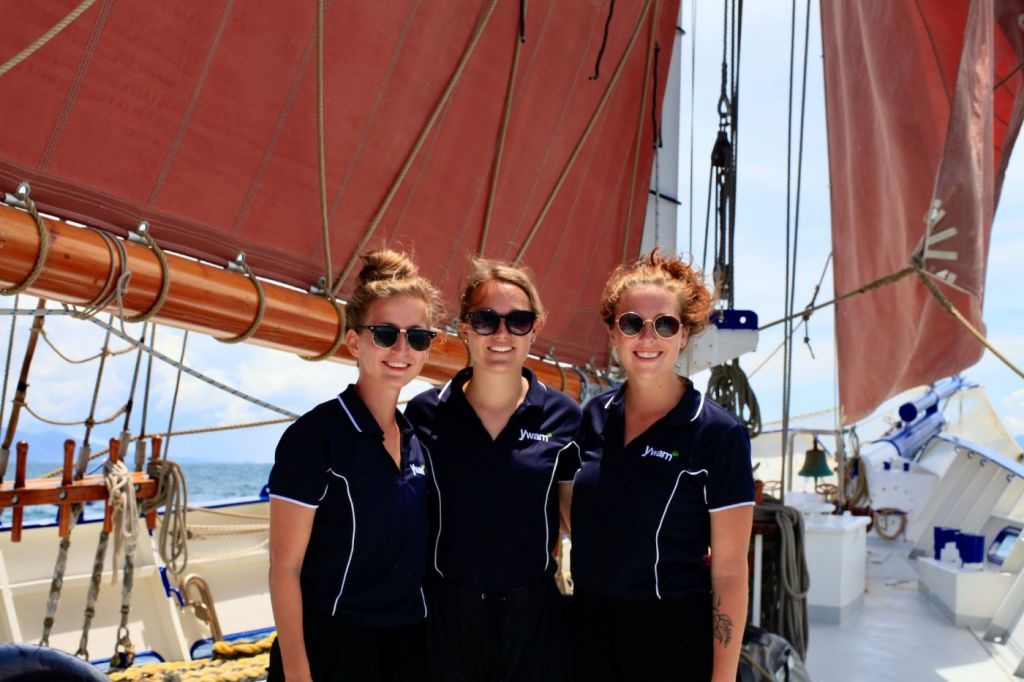
On this page:
Crew requirements for different yacht sizes, yacht types and their crew needs, the cost of hiring a yacht crew and the role of each member.
The size of the yacht is a key factor in determining whether you will need a crew and how many crew members you will require. Below is a table summarizing the crew size requirements for different yacht sizes:
Crew size for yachts under 30 feet
Yachts that are under 30 feet in length are generally small enough to be operated by a single person. However, you still need to have some experience and knowledge of boating to operate them safely. It is also recommended to have at least one additional person on board for safety reasons.
If the yacht is being used for recreational cruising, a crew of two is usually sufficient. You may also need to obtain a recreational boating license depending on your location.
Not sure how to get a boating license? Find which state you're in and get a boating license here.
Crew size for yachts between 30 and 75 feet
Yachts that are between 30 and 75 feet in length may require a crew. These yachts are designed to be operated by a small crew or a couple, with one person serving as captain and the other as crew.
If you have experience and the yacht has upgraded features like autopilot, you may be able to captain your own yacht without a crew. However, if you are new to yachting or the yacht has more advanced features, you may need to hire a crew.
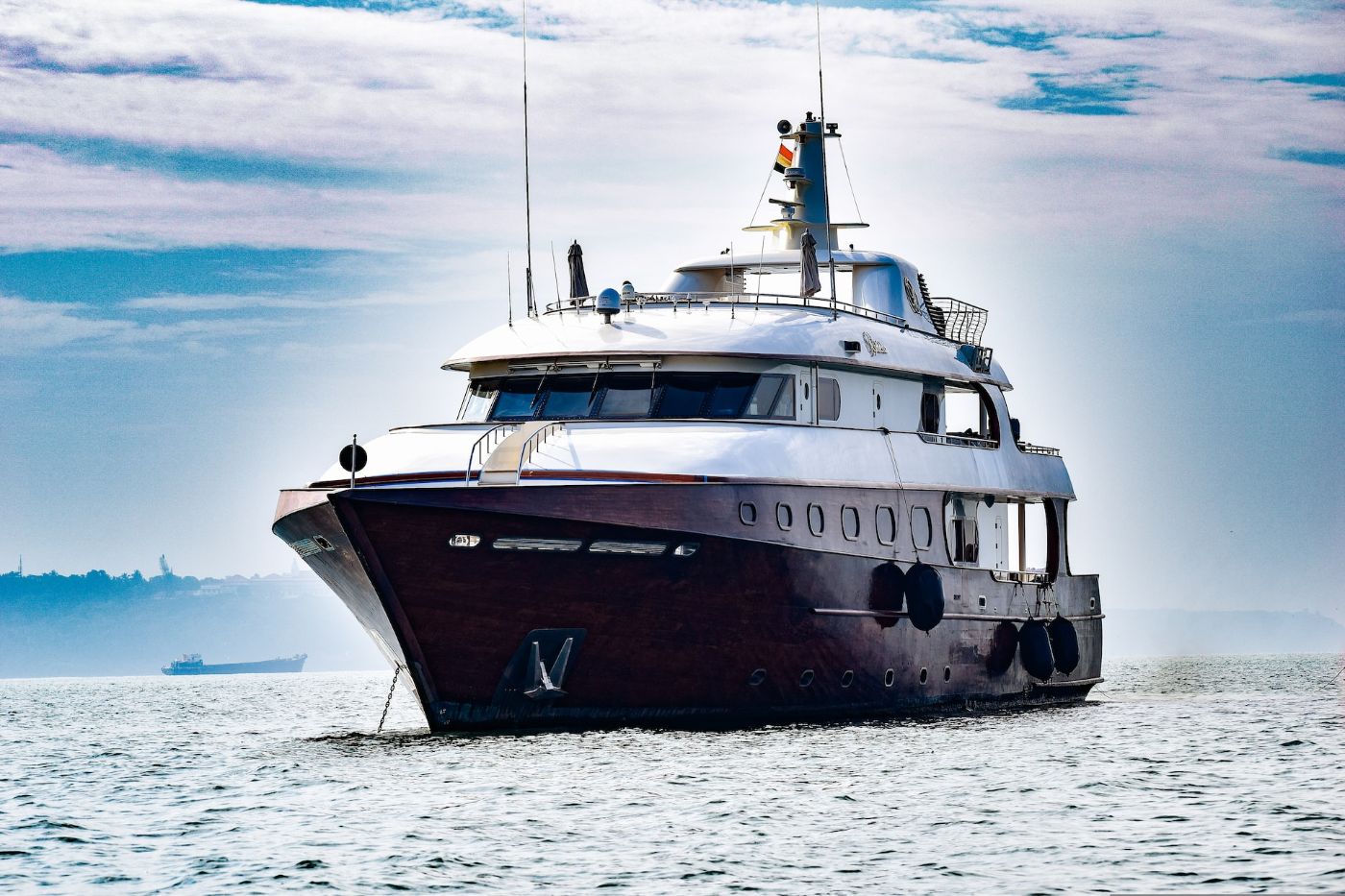
For recreational cruising, a crew of two to four people is usually sufficient . For larger yachts, there may be additional crew members such as a chef, stewardess, or engineer.
Crew size for yachts over 75 feet
Yachts that are over 75 feet in length generally require a crew to operate them safely. The exact number of crew members you will be based on the size and features of the yacht.
- A 90-foot yacht with multiple decks and luxury amenities may require a crew of 8-12 people, including a captain, first mate, chef, stewardess, and deckhand.
- A 100-foot yacht with advanced navigation and communication systems may require a crew of 10-15 people, including a captain, engineer, deckhand, chef, stewardess, and possibly a security officer.
- A 120-foot yacht with a helicopter pad, swimming pool, and other high-end features may require a crew of 12-20 people, including a captain, engineer, deckhand, chef, stewardess, helicopter pilot, and other specialized staff as needed.
Crew size for yachts over 300 feet
Bigger yachts require more crew members because they tend to be more complex and have more systems and equipment that need to be maintained and operated. Additionally, larger yachts typically have more amenities and features that require specialized staff, such as spa therapists, dive instructors, and security personnel.
A yacht that is 300 feet or more in length may have multiple decks, a helipad, a swimming pool, a movie theater, a gym, and other luxurious amenities that require a larger crew to operate and maintain.
In addition, larger yachts may require more crew members to ensure the safety of the guests and the vessel, especially when navigating in challenging waters or during adverse weather conditions. Larger yachts also often provide a higher level of service, which requires more crew members to ensure that every guest's needs are met.
Different types of yachts have different crew needs, which can depend on the yacht's size, features, and intended use. Here's what you need to know about yacht types and their crew needs:
Crew size for recreational yachts
Recreational yachts are typically smaller and used for leisure activities like fishing, cruising, and water sports. Yachts that are 30 feet or smaller can usually be operated by a single person without a crew.
However, larger recreational yachts, like those in the 50-100-foot range, may require a small crew for maintenance and management.
Crew size for sailing yachts
Sailboats are a popular type of yacht used for racing, cruising, and exploring. For sailing yachts between 30 and 50 feet, a crew of four to six is typically required. This crew would include a captain, a first mate, a cook, and one or two deckhands.

For yachts over 50 feet, the crew size can range from six to 20 or more. This is because some yachts may also have additional staff, such as a chef, a stewardess, and a masseuse. These staff members are typically hired to provide luxury services to guests onboard.
One of the hidden costs of buying and owning a 50-foot yacht is the costs for staff and crew, which ranges around $50,000 - $150,000 per year.
Crew size for superyachts
Superyachts are the largest and most luxurious yachts on the market, typically measuring over 100 feet in length. A small superyacht may have a crew of around 20 people, while a larger one may require a crew of 50 or more.
Larger superyachts with more amenities and more guests on board will require a larger crew to ensure that all aspects of the vessel are properly maintained and operated. The team will typically include a captain, first mate, engineer, chef, stewardesses, deckhands, and other specialized roles depending on the yacht's amenities.
Some owners may prefer a smaller crew to maintain a more intimate and personalized experience, while others may opt for a larger crew to ensure that all tasks are handled efficiently and to the highest standard.
Crew size for commercial yachts
Commercial yachts are required to have a crew size that is appropriate for the size and type of the vessel, as well as the number of passengers on board. The crew size can vary greatly depending on the yacht's size, amenities, and intended use.
In general, larger yachts will have a larger crew, while smaller yachts may only require a few crew members. For example, a small yacht that is used for day trips or short-term charters may only require a captain and a mate. However, a larger yacht used for extended charters or as a luxury hotel at sea may need a larger crew.
The crew size for commercial yachts is regulated by various maritime authorities, such as the International Maritime Organization (IMO) and the United States Coast Guard (USCG). These authorities have established minimum crew requirements based on the size and type of the yacht, as well as the number of passengers on board.

Based on USCG requirements, a commercial yacht that is less than 100 gross tons and carries up to 12 passengers must have at least one licensed captain and one crew member. If the yacht carries between 13 and 36 passengers, it must have at least two licensed crew members. For yachts that are over 100 gross tons, the crew size requirements will be higher.
A captain license costs around $700 - $800 , but this may vary according to the country as well as potential extras you might need to purchase.
Crew size for luxury yachts
Luxury yachts are designed for comfort and style, typically featuring high-end amenities like spas, gourmet kitchens, and entertainment systems.
Luxury yachts require a larger crew because they are typically larger, more complex, and more luxurious than other types of boats. A larger crew is necessary to ensure that everything runs smoothly and that the guests have an enjoyable and comfortable experience on board.
Here are some of the reasons why luxury yachts require a crew of 10-30 persons:
Safety: A larger crew is necessary to ensure the safety of the guests and the yacht. The crew must be trained and experienced in handling emergency situations, such as fires, medical emergencies, and adverse weather conditions.
Navigation: Luxury yachts require a skilled crew to navigate the vessel safely and efficiently. The captain and crew must be familiar with the yacht's systems, equipment, local waterways, and navigation rules.
Maintenance: Luxury yachts require constant maintenance to keep them in top condition. A larger crew is necessary to perform routine maintenance tasks, such as cleaning, painting, and repairing the yacht's systems and equipment.
Service: Luxury yachts are known for their high level of service and hospitality. A larger crew is necessary to provide guests with personalized service, including gourmet meals, housekeeping, and other amenities.
Entertainment: Luxury yachts often have a variety of entertainment options, such as water sports equipment, movie theaters, and music systems. A larger crew is necessary to operate and maintain these amenities, as well as to provide instruction and assistance to the guests.
The cost of hiring a full-time yacht crew can range from $50,000 to $200,000 per crew member per year. This includes their salary, benefits, and any other expenses associated with their employment, such as training and uniforms.
Here's a breakdown of the average annual salaries for different yacht crew positions:
The roles and responsibilities of the captain
- Responsible for the overall operation of the yacht including navigation, safety, and communication with other vessels
- Must have extensive knowledge of waterways
- Must make quick decisions in case of emergency
- Must hold valid Merchant Mariner Credential (MMC) issued by USCG
- For yachts over 100 gross tons, a captain must hold a USCG license for appropriate tonnage and route
- May need to hold specific endorsements, such as a towing endorsement or a radar observer endorsement
The roles and responsibilities of the captain engineer
- Responsible for mechanical systems on board the yacht such as engines, generators, and other equipment
- Must have a good understanding of how systems work
- Troubleshoots problems that arise
- Works closely with the captain and other crew members
- May be responsible for managing inventory and ordering spare parts and supplies
The roles and responsibilities of the stewardess
The stewardess is the first point of contact for guests and they are responsible for the following:
- Greet guests warmly and show them to their cabins
- Provide information about the yacht and its amenities, as well as local attractions and activities
- Clean and maintain guests' cabins
- Make beds and ensure fresh towels and linens
- Responsible for serving meals and drinks, setting the table, and clearing dishes
The roles and responsibilities of the deckhand
The deckhand is an entry-level position on a yacht and they work under the supervision of the first mate. They are responsible for a variety of tasks such as:
- Cleaning the yacht and handling lines and fenders
- Assisting with navigation and docking
- Maintaining the exterior of the yacht, such as washing and waxing the hull, cleaning the decks and windows, and maintaining the yacht's equipment and machinery
The roles and responsibilities of the chef

- Responsible for providing exceptional culinary experiences for guests
- Plans menus, prepares meals and manages galley and kitchen area
- Plans menus that meet the dietary preferences and restrictions of guests
- Creates menus for breakfast, lunch, and dinner, as well as snacks and appetizers
- Responsible for provisioning the yacht with fresh ingredients and supplies
- Prepares high-quality meals and presents them well
- Manages galley and kitchen area, including cleaning and maintaining the kitchen, managing inventory and ordering supplies, and ensuring that all equipment is in good working order
The roles and responsibilities of the first mate
- Considered as the second in command on a yacht
- Works closely with the captain to ensure the safe operation and navigation of the boat
- Responsible for managing crew and overseeing day-to-day activities on board
- Assists captain with navigation and piloting of yacht
- Monitors weather conditions, charts courses, and ensures the yacht is on track and avoiding potential hazards
- Manages crew and delegates tasks as needed
- May be responsible for scheduling and coordinating crew shifts, managing inventory and ordering supplies, and ensuring that the yacht is clean and well-maintained
- May serve as liaison between guests and captain, ensuring that their needs are met and that they have an enjoyable experience on board
The roles and responsibilities of the second mate
- Assists captain and first mate in navigation and operation of yacht
- Maintains the yacht's navigational equipment, including GPS, radar, and other electronic devices
- Ensures all charts and publications are up-to-date and that any necessary corrections or updates are made.
Leave a comment
You may also like, at what size is a boat considered a yacht (does size matter).
As a yacht enthusiast, it can be exciting to explore the numerous options available to you. Size does matter, but it is equally essential to consider the yacht's …

Do I Need a License to Drive a Boat? (Clear Info for 50 States)

Do You Need a License to Sail Around the World?

How Much Does It Cost To Get a Captain's License?
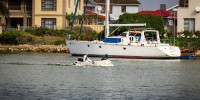
Cost of Buying & Owning a Small Yacht (Detailed Breakdown)
Own your first boat within a year on any budget.
A sailboat doesn't have to be expensive if you know what you're doing. If you want to learn how to make your sailing dream reality within a year, leave your email and I'll send you free updates . I don't like spam - I will only send helpful content.
Ready to Own Your First Boat?
Just tell us the best email address to send your tips to:
Below Deck Lost Two Crew Members In One Episode, And As A Fan I’m Honestly Shocked This Isn’t The First Time That Happened
This week saw a few castaways from the St. David crew.

Well, it looks like there's a little more wiggle room down in the crew quarters of the St. David. That's because this week's episode of Below Deck (which you can catch up on with a Peacock subscription ) saw the shocking early departure of not one but two onboard staffers. However, what's even more surprising is that this isn't the first time that's happened in Bravo's yacht-focused reality franchise.
After that widely despised eighth season of Below Deck Mediterranean , it looks like the O.G. Below Deck decided to fire up the engines where the drama's concerned for Season 11, with both bosun Jared Woodin and stew Cat Baugh ending their charter seasons earlier. However, only one of those early exits was voluntary.
Joining a long line of fired Below Deck crew—including Captain Sandy's number one hater Hannah Ferrier , accidental mustard-gas concocter Elizabeth Frankini and the exhaustingly argumentative Lexi Wilson , among many others—Jared Woodin was fired by Captain Kerry Titheradge due to bad behavior in the March 18th episode on the 2024 TV schedule , titled "Cat's Out of the Bag." Jared's dismissal came after he drunkenly barged into a crew cabin and berated deckhand Kyle Stillie for spilling loose tobacco near the boat's hot tub.
During the episode, Captain Kerry said this about Jared's inappropriate, over-the-top reaction and poor treatment of his crewmate:
This is the second time you've gone on the piss and you've had bad behavior. You're in a leadership role. You can't be acting like that. You gotta be above the fray. The way that you're treating these guys is not acceptable, and we've had discussions, and I've tried to guide you, I've shown you compassion. But, you've got shit going on, mate. You're your own worst enemy right now. You need to depart the vessel.
The Aussie captain was sympathetic, however, to the mental struggles Jared was clearly going through, and he told him that remaining on the boat would be "a disservice" to his mental health.
The topic of having a "good headspace" while working onboard also came up for Cat Baugh, whose own unexpected departure came after the stewardess received a distressing call from a friend back home in America. Deciding to put her own mental health first and go be there for her friend, Baugh put in her resignation with chief stew Fraser Olender and Captain Kerry, both of whom were supportive of her decision. Baugh said of her exit:
I wish I could have stayed. But, the thing is, there's no way I could have. This is too much. I need to be with the people [who] need me, and also, on this boat, I'm at a breaking point. I need to protect my mental health. It's like my support system is at home, not here.
Losing two crew members in one episode is surprising, sure, but not unprecedented. On Below Deck Down Under , the Aussie spin-off of the reality series, bosun Luke Jones was fired by Captain Jason Chambers for drunken misconduct after trying to get in a stew's bed naked while she was inebriated and unconscious. Shortly after, stew Laura Bileskalne's contract was also terminated for making repeating unwanted advances on a male deckhand. Below Deck veteran Lee Rosbach praised Chambers's "superb" handling of the crew misconduct.
CINEMABLEND NEWSLETTER
Your Daily Blend of Entertainment News
So, as you can see, while this situation was shocking to many, it's by no means the first time it's happened.
Despite the two exits, there's still plenty more Below Deck to go, so tune in to Season 11 on Mondays at 9 p.m. ET on Bravo to see if there will be any more crew shake-ups aboard the St. David .
Christina Izzo is a writer-editor covering culture, entertainment and lifestyle in New York City. She was previously the Deputy Editor at My Imperfect Life, the Features Editor at Rachael Ray In Season and Reveal, as well as the Food & Drink Editor and chief restaurant critic at Time Out New York. Regularly covers Bravo shows, Oscar contenders, the latest streaming news and anything happening with Harry Styles.
Former Jeopardy Head Honcho Recalls Alex Trebek Being Such A Fighter On Set In His Last Months: ‘Pitching Five Perfect Games A Day’
Is Bianca Censori's Mom Really Worried About Her Safety? She Traveled Thousands Of Miles To Be With Her Daughter And Kanye
Alien: Romulus Director Explains Why New Horror Sequel Won’t Mess With The Official Timeline
Most Popular
By Mack Rawden March 21, 2024
By Dirk Libbey March 21, 2024
By Riley Utley March 21, 2024
By Heidi Venable March 21, 2024
By Corey Chichizola March 21, 2024
By Laura Hurley March 21, 2024
By Christina Izzo March 21, 2024
- 2 Former Jeopardy Head Honcho Recalls Alex Trebek Being Such A Fighter On Set In His Last Months: ‘Pitching Five Perfect Games A Day’
- 3 Friends' David Schwimmer Is Heading Back To TV As A Divorced Father And Professor, But It's Not Ross Geller
- 4 Guardians Of The Galaxy’s James Gunn Has The Sweetest Response After Rocket Raccoon Was The Answer To A Wheel Of Fortune Puzzle
- 5 Is Bianca Censori's Mom Really Worried About Her Safety? She Traveled Thousands Of Miles To Be With Her Daughter And Kanye
Latest News
The boat race 2024: st peter’s students selected to cox the oxford women’s blue and oxford women’s reserve boats.

On Wednesday, 13 March, The Boat Race Company Limited, in partnership with Oxford University Boat Club (OUBC), Oxford University Women’s Boat Club (OUWBC) and Cambridge University Boat Club, hosted The Gemini Boat Race 2024 Crew Announcement in London at Battersea Power Station. St Peter’s College students will cox the Oxford Women’s Blue and Oxford Women’s Reserve Boats.

Joe Gellet is a first-year postgraduate medical student at St Peter’s College. Joe will cox the Oxford Women’s Blue Boat at the 2024 race. A graduate of St Anne’s, Joe is no stranger to the Boat Race, having been selected for OUWBC crews in 2021 and 2022.
Joe said, ‘I am very excited to have made the Blue Boat for the second time this year. Although this is my first year at St Peter’s, I have felt very welcomed and supported by the community, and I am appreciative that the College has contributed to my rowing subs. I look forward to representing St Peter’s at the race this year!’

Postgraduate medical student Tara Slade , who coxed the Oxford Women’s Blue Boat in 2023, was selected to cox the Oxford Women’s Reserve Boat in 2024.
Tara said, ‘I’m extremely proud to be racing alongside such strong, dedicated women. The best part of rowing is the people, and I'm fortunate to be surrounded by this supportive and driven community, from past boat clubs, to St Peter’s facilitating my aspirations to stroke a boat in Summer Eights last year, to Oxford University Boat Club women’s squad.
'I have immense respect for every member of our squad, for physical strength, mental resilience, academic prowess, and overall outstanding commitment to each other. We look forward to an excellent race, and treasure our gains both on and off the water, carrying our signature “with you” call into the sporting, professional and wider aspects of our lives.’
The Boat Race will take place on Saturday 30 March 2024. To learn more about the Boat Race, click here .
Images by Benedict Tufnell/Row360 and Nikola Boysova
Share links
- Share on Digg
- Share on Facebook
- Share on Google +
- Share on LinkedIn
- Share on Pinterst
- Share on Reddit
- Share on Skype
- Share on StumbleUpon
- Share on Tumblr
- Share on Twitter
- Share on WhatsApp
To provide the best possible experience, this website uses cookies. By clicking 'Accept All' you accept our Privacy Policy and use of cookies.
Necessary Cookies
Necessary cookies are always on and are required to enable core functionality such as secure login. They don't contain personally identifiable data.
Analytical Cookies
Analytical cookies help us understand how visitors interact with our website, providing metrics such as the number of visitors and page views.
Where to next?
- Support St Peter’s Read more
- News Archive Read more

Cargo crew to the rescue: fishermen saved from sinking boat in Philippines
Posted: March 21, 2024 | Last updated: March 22, 2024
A dramatic rescue unfolded in Cagayan De Oro, Philippines on March 14, 2024, as captured on video by @lubemaestro. The footage shows fishermen clinging to their nearly submerged boat, desperately bailing out water while calling for help. Thankfully, quick-thinking cargo staff witnessed the scene and sprang into action. According to one of the rescuers, their swift response upon hearing the cries for help proved lifesaving, allowing them to pull the fishermen from danger before their boat sank.
More for You
Letitia James has made a 'mistake': Don Peebles
Judge wants details on any Trump Organization attempts to secure a bond in its civil fraud case
Former Steinhoff CEO Markus Jooste dies by suicide, reports say
The Hard-To-Find Bourbon That's Somehow Available At Costco
Jason Beghe on Triggering Events in ‘Chicago P.D.': "There Are Things He Wishes He Could Take Back"
Navy fires SEAL commodore in latest high-profile dismissal
Opinion: Stormy Daniels has the last word on Trump
Ken Buck’s parting gift to GOP: Signing Democrats’ Ukraine discharge petition
Indiana student receives patriotic surprise after high school bans Old Glory display: 'Hold your ground'
Gazans increasingly back a two-state solution, as support for Hamas drops
9 False Facts About Spam We've All Believed
Planet Fitness Stock Tumbles as Boycott Calls Grow
Trump is making 'wild' claims about late hush money documents, prosecutors say
Post Misrepresents Which Administration Sent Stimulus Checks to Dead People
NFL exec could see Steelers 'moving on' from Russell Wilson after training camp: report
Taco Bell Has $1 Fan-Favorite Menu Items Like Mexican Pizza for the Next Month
Haley backer Mark Cuban attends Biden fundraiser amid push to peel off GOP votes
New hope for sisters trapped in their bodies
Dollar Tree is closing 1,000 stores. Here's where they are located.
Jared Kushner's absurd ideas about Gaza are a preview of Trump's policies
A Russian warship's last-resort machine-gun fire wasn't enough to defeat the Ukrainian sea drone assault that sunk it, video shows
- A newly surfaced video shows armed Russian crews attempting to defend a landing ship from Ukrainian sea drones.
- In the video, crews fire machine guns at the drones. Another video shows the drones attacking the ship.
- Russia has been upping its defenses against naval drones, but it's unclear how effective they are.

A newly surfaced video shows a Russian warship crew making their last stand against Ukraine's exploding sea drones.
The footage captures the Russian crew shooting at the approaching drones with machine guns but ultimately failing to stop them. While Russia has tried to fend off attacks, Ukraine is continuing to terrorize, overwhelm, and sink Russian ships .
The video of the Ukrainian naval drone attack on the Black Sea Fleet's Project 775 Ropucha-class landing ship Caesar Kunikov last month was shared online Wednesday, originally on a Russian milblogger's Telegram channel before being circulated on other social media platforms.
February 14, 2024: The Russian crew of the Project 775 Ropucha-class landing ship Caesar Kunikov (BDK-64) attempt to repel a Ukrainian attack with unmanned surface vessels (USVs) on their warship. Ultimately, Caesar Kunikov (BDK-64) sank after being hit multiple times by USVs. https://t.co/4XYsK2WFPY pic.twitter.com/3Wg4AjaDQW — Status-6 (Military & Conflict News) (@Archer83Able) March 6, 2024
Crew members can be seen rushing around the decks of the ship and firing machine guns at the drones, unleashing a hail of bullets in a desperate attempt to stop them.
It's unclear whether they were able to repel any of the USVs. The video doesn't appear to show that and instead shows a large explosion about a minute and a half into the footage.
Ukraine had previously released footage of the February 14 incident, sharing a video of their drones approaching the ship before targeting and destroying it. By the end of that video, the Kunikov is clearly sinking.
Related stories
At the time of the incident, Ukraine declared the attack victorious.
🇺🇦🇷🇺 | Ukraine sinks another Russian warship. The Main Directorate of Intelligence of the Ukrainian Ministry of Defense (HUR MO) released footage from an attack with unmanned surface vessels (USVs) on the Project 775 Ropucha-class landing ship Caesar Kunikov (BDK-64) of the… pic.twitter.com/4EyVc9nHyA — Status-6 (Military & Conflict News) (@Archer83Able) February 14, 2024
Business Insider was unable to independently verify the details of the videos.
It's not uncommon for Ukraine to release videos of successful attacks, but it's much rarer occurrence to see the Russian side of the battle. The view from the Russian warship during the February 14 incident highlights how Russia is stepping up its efforts to defend against a threat that has destroyed many of its warships in the Black Sea .
Ukraine's success with USVs has become a legend. With no naval warships, Ukraine has had to improvise, prioritizing the development of what it calls "the world's first fleet of naval drones." The USVs, some of which are called Sea Babies, have been developed and purchased in part due to large crowdfunding campaigns.
When Ukraine began deploying these USVs, chaos ensued for Russian naval forces in the Black Sea. The Ukrainian drones targeted and destroyed Black Sea Fleet warships , a section of the Kerch Bridge connecting occupied Crimea with Russia , attacked bases, and went after other key infrastructure in and around the Black Sea.
Russia has been attempting to defend its ships from the naval drones by employing machine guns on the decks and beefing up combat aircraft patrols over the Black Sea, but Ukraine has upped the capabilities of some of its drones.
A Ukrainian general with the Security Services of Ukraine recently told Business Insider's Jake Epstein that new models are "stronger, more efficient, and deadlier."
One such USV was shown off in new photos shared by the SBU on Wednesday. In a Telegram post that was later shared on X, the videos and photos show the drone gliding through the water.
New look at a Ukrainian Sea Baby USV, this one christened “Avdiivka”. This Sea Baby, reportedly an updated 2024 unit, is equipped with a Kymeta u8 Ka band SATCOM antenna, a FLIR marine IR turret, and a Starlink antenna. pic.twitter.com/zhsi91mVt5 — OSINTtechnical (@Osinttechnical) March 6, 2024
The first of the new Sea Babies, called Avdiivka after a town that recently fell to the Russians, boasts a variety of new features to help it maintain connection with its operator and avoid succumbing to electronic jamming.
Watch: Video of Russian naval ship explosion shows a much-needed win for Ukraine
- Main content

COMMENTS
The tips depend on the size of the Yacht and the guests, but a good estimate is 10 - 20% of the total weekly price of a Yacht. If you imagine a 50m (165 foot) Yacht with 9 crew, it typically charters for $150,000 - $250,000 per week. For simplicity, let's add a 15% tip for $200,000/wk.
The term 'yacht crew' refers to at least a dozen-or-so different roles on a superyacht. Some are more hospitality-focused, such as a steward or stewardess, while others are more skill-based, such as an engineer. Whilst you may be planning to enter the industry as a deckhand or junior stew and work your way up, it's important to understand ...
Typical Yacht Crew Positions Deckhand. As a deckhand, you generally clean and wash the exterior of the boat. You drive the tender (smaller boat that ferries back and forth between the yacht and dock). You take out the garbage, change light bulbs, do maintenance on the tender outboard engine when it needs it, clean the winches, etc.
Go to a superyacht marina. 1. Have the right attitude. Along with gaining the correct qualifications to prove your competence, to become a Yachtie, you must have certain characteristics to thrive in this industry. Yachties have to be well presented, articulate, know how to take orders, and be able to work hard, all with a smile and enthusiasm.
The helm is responsible for steering and controlling the direction of a sailboat. To effectively helm a sailboat, follow these steps: 1. Take your position at the helm and familiarize yourself with the steering mechanism. 2. Maintain a steady grip on the tiller or wheel and balance your stance.
There are currently over 15,000 yachts in the world large enough to require professional, qualified yacht crew and as a result this industry is growing rapidly each year. A career in yachting can be rewarding, exciting and a wonderful opportunity to travel the world and explore new horizons! Wherever there is water, you have the potential to go.
Use one large recruitment agency with a wide-ranging network, not multiple smaller ones. All images courtesy of Adam Nickel. A well-balanced, happy crew on board, meanwhile, sets the tone for the whole yacht, and it pays to get it right financially, too. Aside from the comfort that comes with being around those who know you well, "about a ...
CRN's 73m Yalla. Because the fact is, new crew often underestimate how physically demanding and exhausting the job is. "It's not all Rosé and beach days, spending your tip money," says Elise Ciappara, former chief stew on yachts from 35 to 90 meters and current Head of Yacht Expeditions for Pelorus. "It's also scrubbing floors on ...
Obtain an ENG1 medical certificate. Select a location to join the industry. Obtain visas & documentation. Create a superyacht CV. Find superyacht job vacancies. 1. Have Realistic Expectations. The superyacht industry is highly competitive and in order to qualify for employment a financial investment is required (training & travel) For ...
Entering the yachting industry as a crew can be confusing and unclear for those without the correct guidance. This blog post explores all elements of getting onboard as yacht crew or being a 'yachtie.' Firstly the term 'yachtie' is for people working as yacht crew on superyachts. But within this category, there are various positions and job roles.
A superyacht Stewardess works as part of the interior team under the supervision of the Chief Stew. They handle all of the housekeeping, laundry, meal services, and detailing of the yacht's interior spaces. Service Stews are full-time positions aboard yachts measuring 60 meters (195 feet) and above.
Working hours for yacht crew members can vary depending on the yacht's schedule and guest requirements. Crew members may work long hours, often 12-16 hours per day, during busy charter seasons. However, there may also be periods of downtime between charters. Living conditions on a yacht can be tight, with shared cabins and limited personal space.
Empty the dishwasher. It's not rocket science and believe us, the other crew know when you are avoiding the process like the plague. 3. Greet your fellow crewmember. Be polite, look up and just say hi. You do live together after all. 4. Respect personal space. It is cramped living with often nowhere to go to escape.
For yacht crew. It's free for everyone to browse though all of our current sailing opportunities. Become a member to contact yacht owners and join their crew. Find sailing opportunities. For yacht owners. Registration and posting is free if you are looking for a skipper or crew. Find amateur and professional crew for short or long term voyages.
When you book our Deckhand and Stewardess packages you also get an included STCW Basic Safety Training week in Croatia or Florida to get your full STCW certification and Basic Safety training. Our packages above include every STCW certificate, Yacht CV and yacht qualifications you need to become a stewardess or deckhand to work as yacht crew on ...
Yacht Crew Training. Yacht owners and captains require well trained crew. Some certificates (such as STCW) are mandatory for everyone, others are mandatory for certain positions or may improve your chances of getting hired.
But it'll be smooth sailing once you've chosen a crew that fits the needs and personality of your yacht. Northrop & Johnson. (954) 462-1234. Luxury Yachts Group. (954) 525-9959. This article originally appeared in the August 2011 issue of Power & Motoryacht magazine. Now HiringHow To Staff A Yacht The Right Way.Illustration by Steve ...
Bulk up with technical skills. "Engineers need to carry enough spare parts and be able to repair the yacht themselves instead of booking specialists to fly out to the yacht's location," says Patterson. "This is the same for a bosun/deck crew." Ensure that the crew offers a broad swathe of technical expertise, from GRP and woodworking repairs to ...
5 tips for a good crew. Be willing and flexible. Honesty is important, particularly about ability and experience. By all means contribute to any discussion, but respect the skipper's decision ...
This internationally accredited certificate is a mandatory requirement for all food handlers and servers. It teaches the basic knowledge of how to safely store, handle, cook and serve food onboard a superyacht in a hygienic and safe manner. For chefs working on commercially registered yachts (charter yachts) and/or chefs cooking for 10 or more ...
With the appropriate boat licenses, you can typically operate a boat up to 75 feet without a crew. However, most yachts need crew for docking, launching, caring for guests, and watching for danger or other boats. Without a crew, an autopilot feature may be crucial to help with keeping you on course. A crew can help because someone must always ...
Although much of the focus is on securing the right yacht, the secret to the success of a charter is its crew. "Put simply, the crew make the difference between a good charter yacht and a bad ...
A yacht that is 100 feet in length requires a crew of at least four to six people, including a captain, engineer, stewardess, and deckhand. Meanwhile, yachts that are under 30 feet in length can be operated by a single person. Recreational yachts are typically smaller and used for leisure activities like fishing, cruising, and water sports.
This week saw a few castaways from the St. David crew, as one Below Deck cast member was fired and another chose to leave the yacht-based reality franchise.
Lost in zero visibility with no compass and 36 men aboard the overloaded boat, Webber made a critical choice. The CG 36500 motored into the night and the Coast Guard crew was on the lookout for anything: lights, land or marked buoys. "As luck would have it, we found a little buoy on Chatham Bar and that small red light never looked so ...
Postgraduate medical student Tara Slade, who coxed the Oxford Women's Blue Boat in 2023, was selected to cox the Oxford Women's Reserve Boat in 2024.. Tara said, 'I'm extremely proud to be racing alongside such strong, dedicated women. The best part of rowing is the people, and I'm fortunate to be surrounded by this supportive and driven community, from past boat clubs, to St Peter's ...
A dramatic rescue unfolded in Cagayan De Oro, Philippines on March 14, 2024, as captured on video by @lubemaestro. The footage shows fishermen clinging to their nearly submerged boat, desperately ...
The Keoyoung Sun, with 11 crew on board, capsized on Wednesday off the coast of Mutsure Island in Japan's southwestern Yamaguchi prefecture, Katamura said. This included two South Koreans, eight ...
The Russian warship's crew rained machine gun fire down on the water but ultimately failed to stop the Ukrainian drones from hitting their ship. Menu icon A vertical stack of three evenly spaced ...